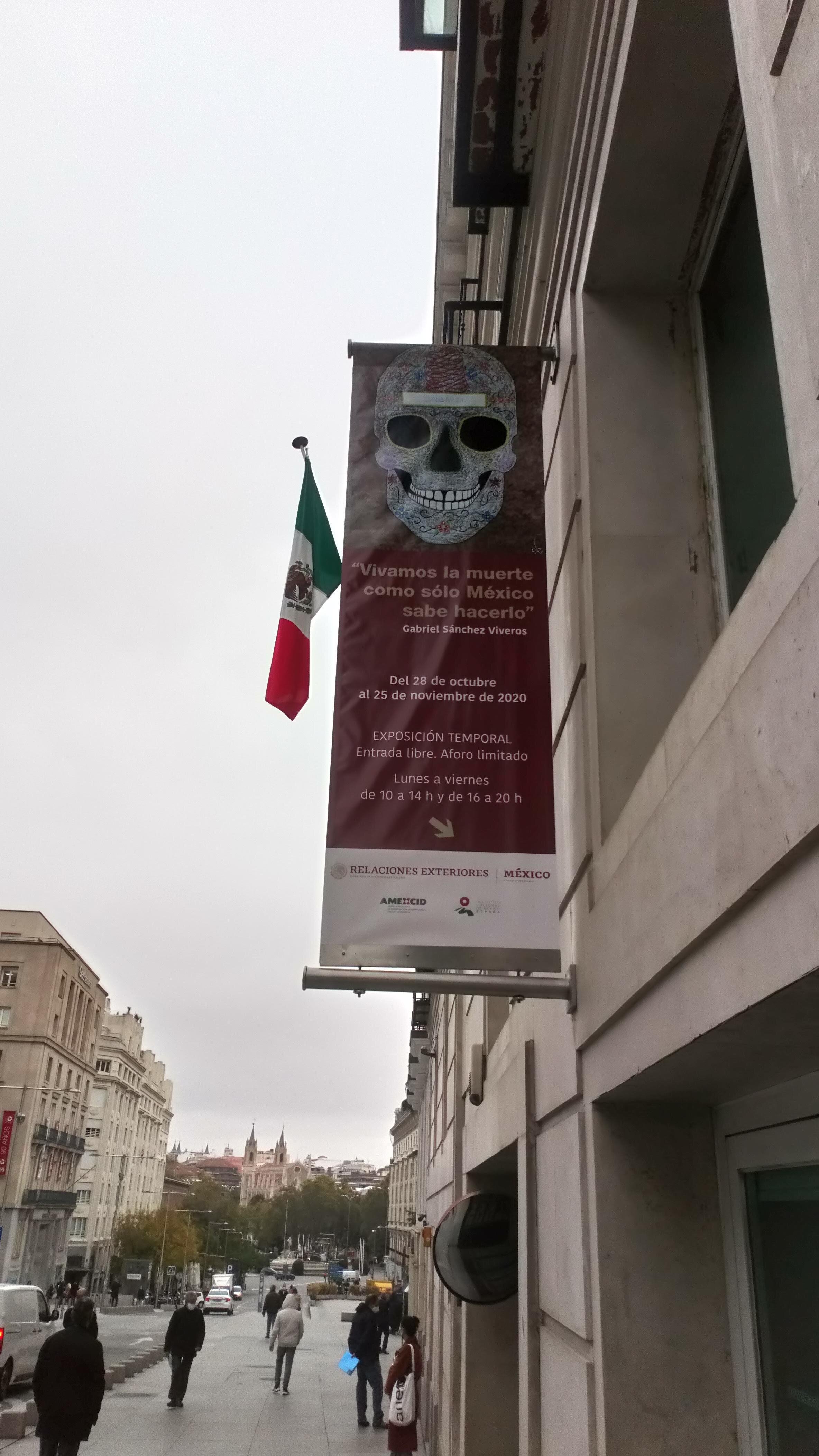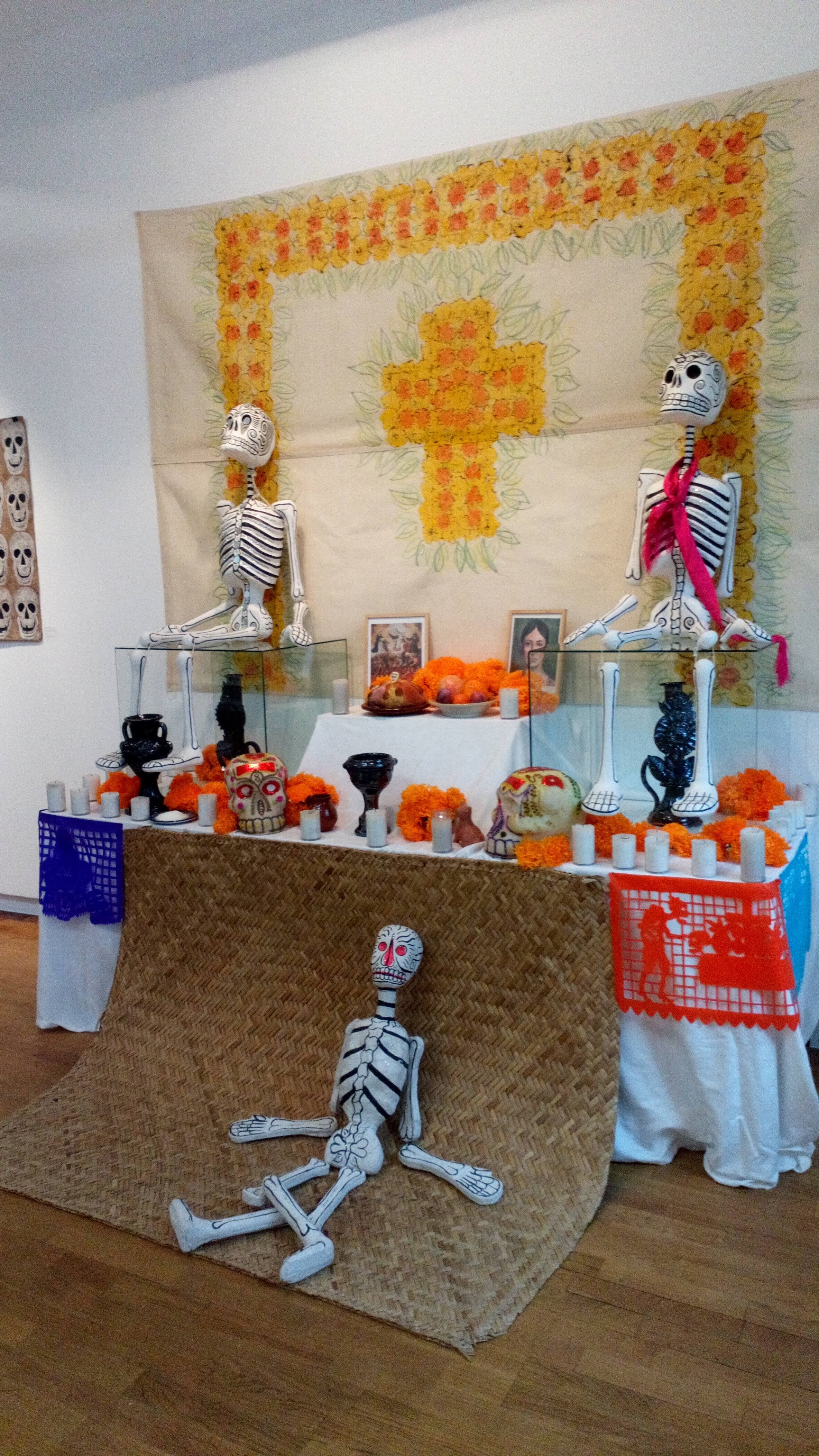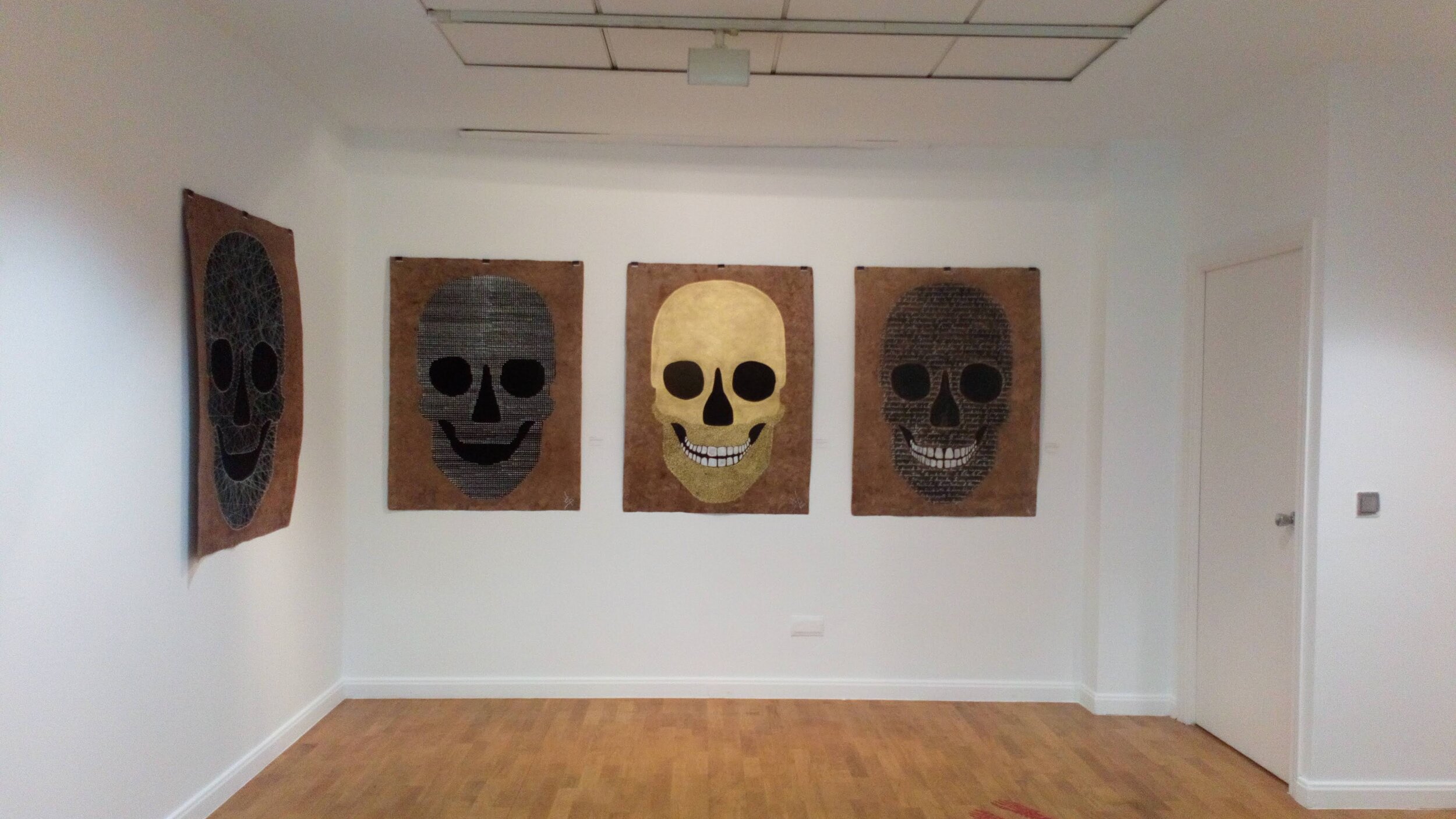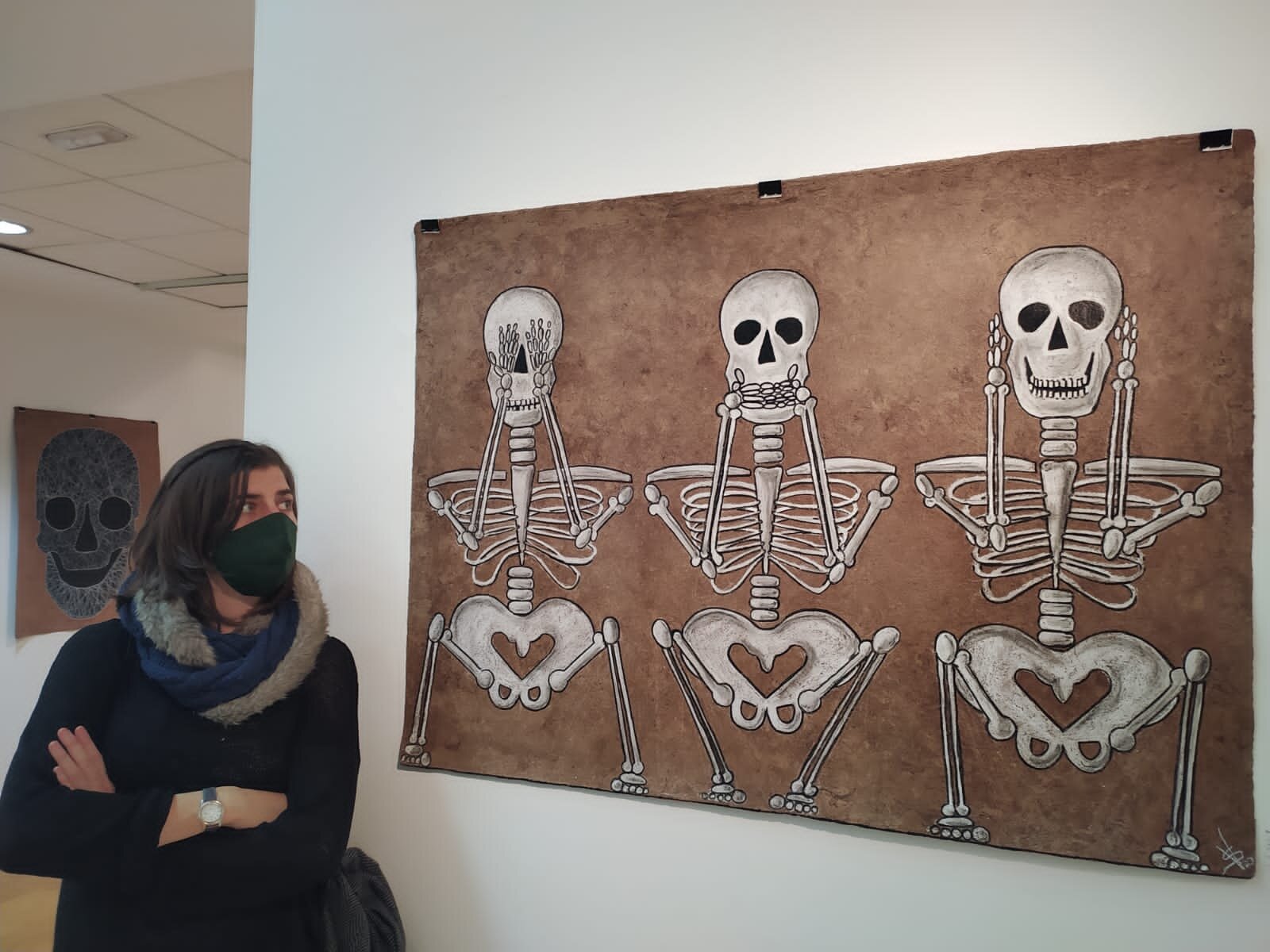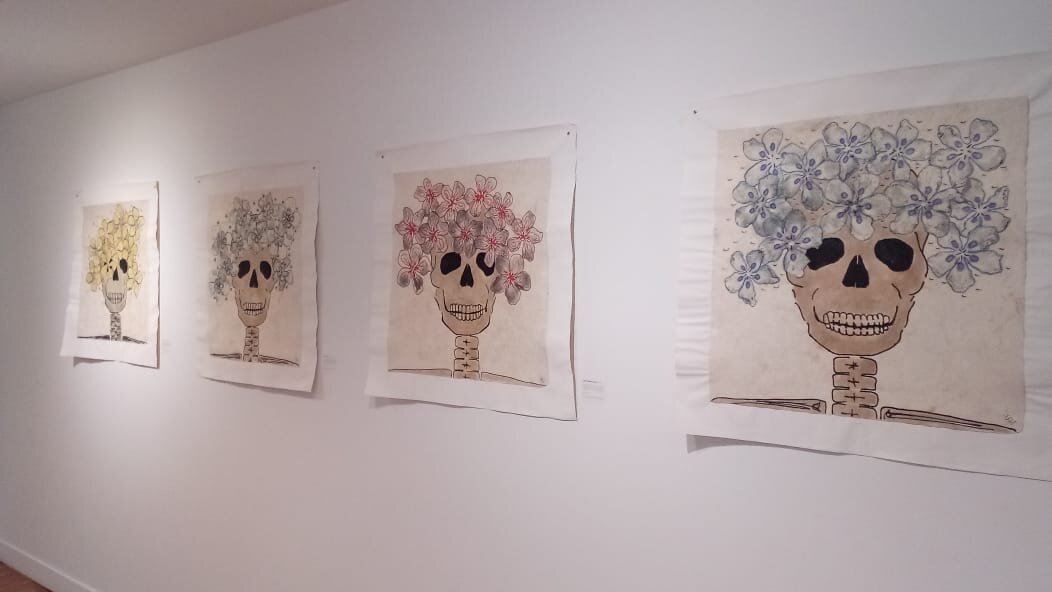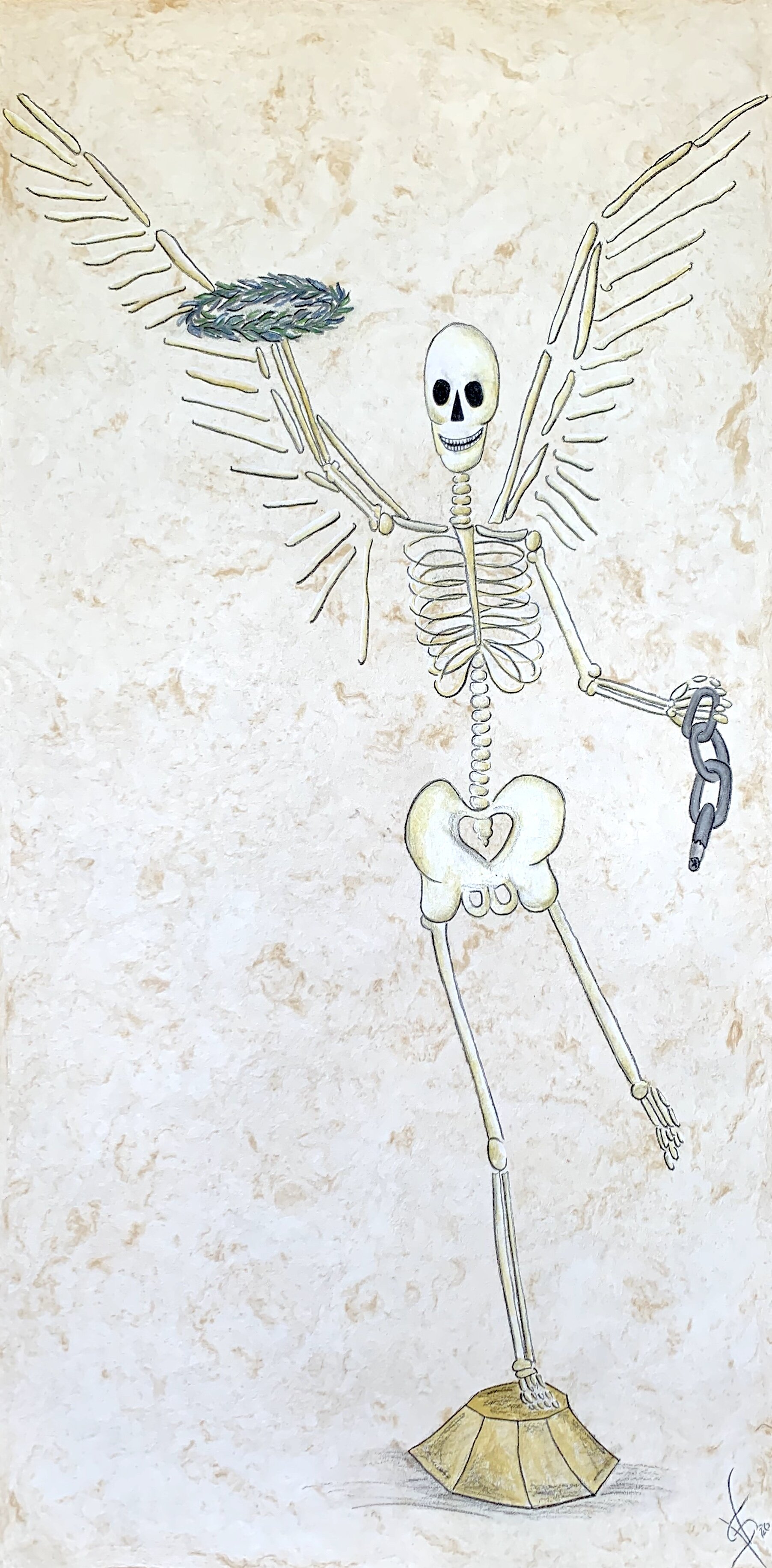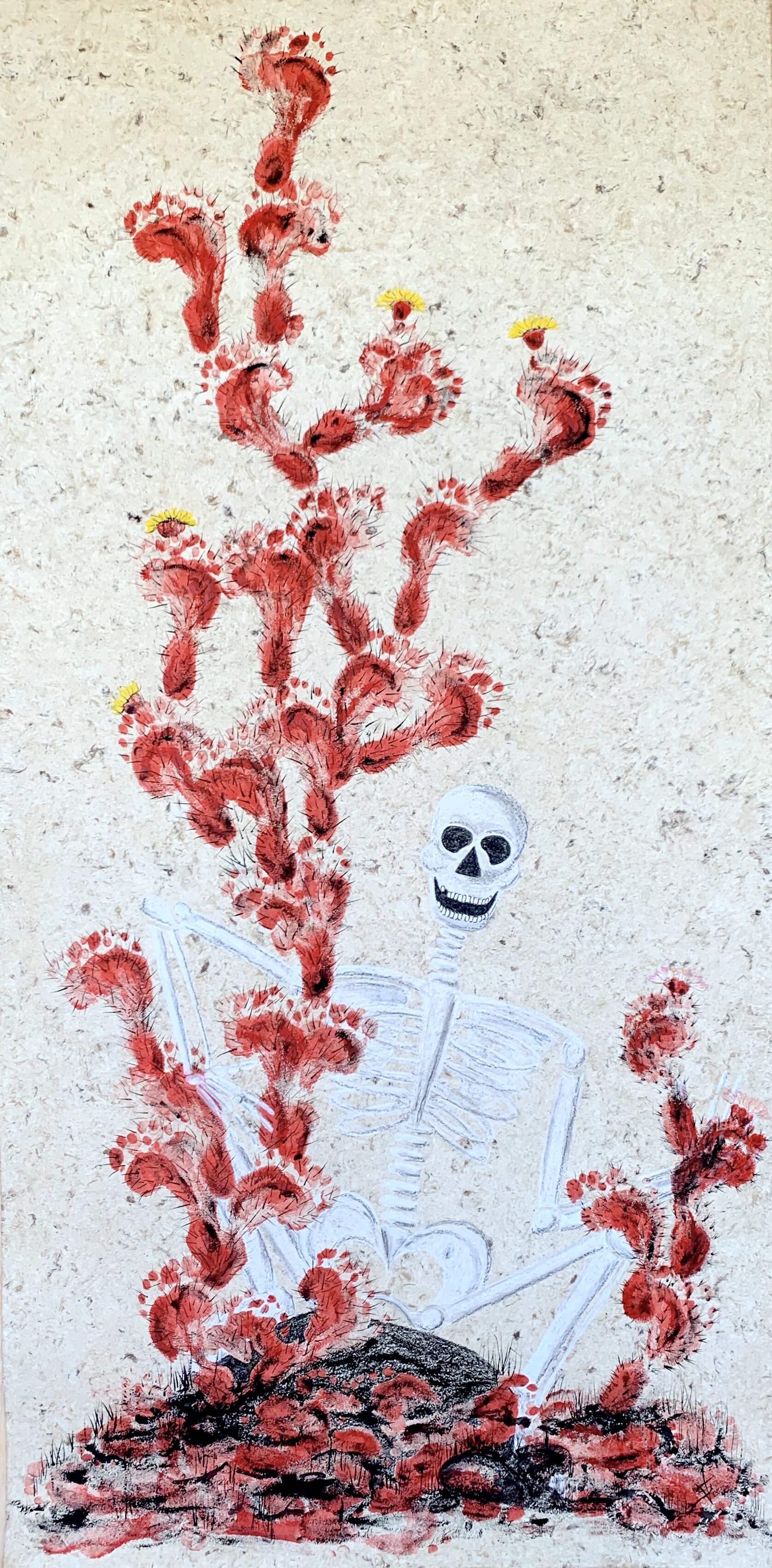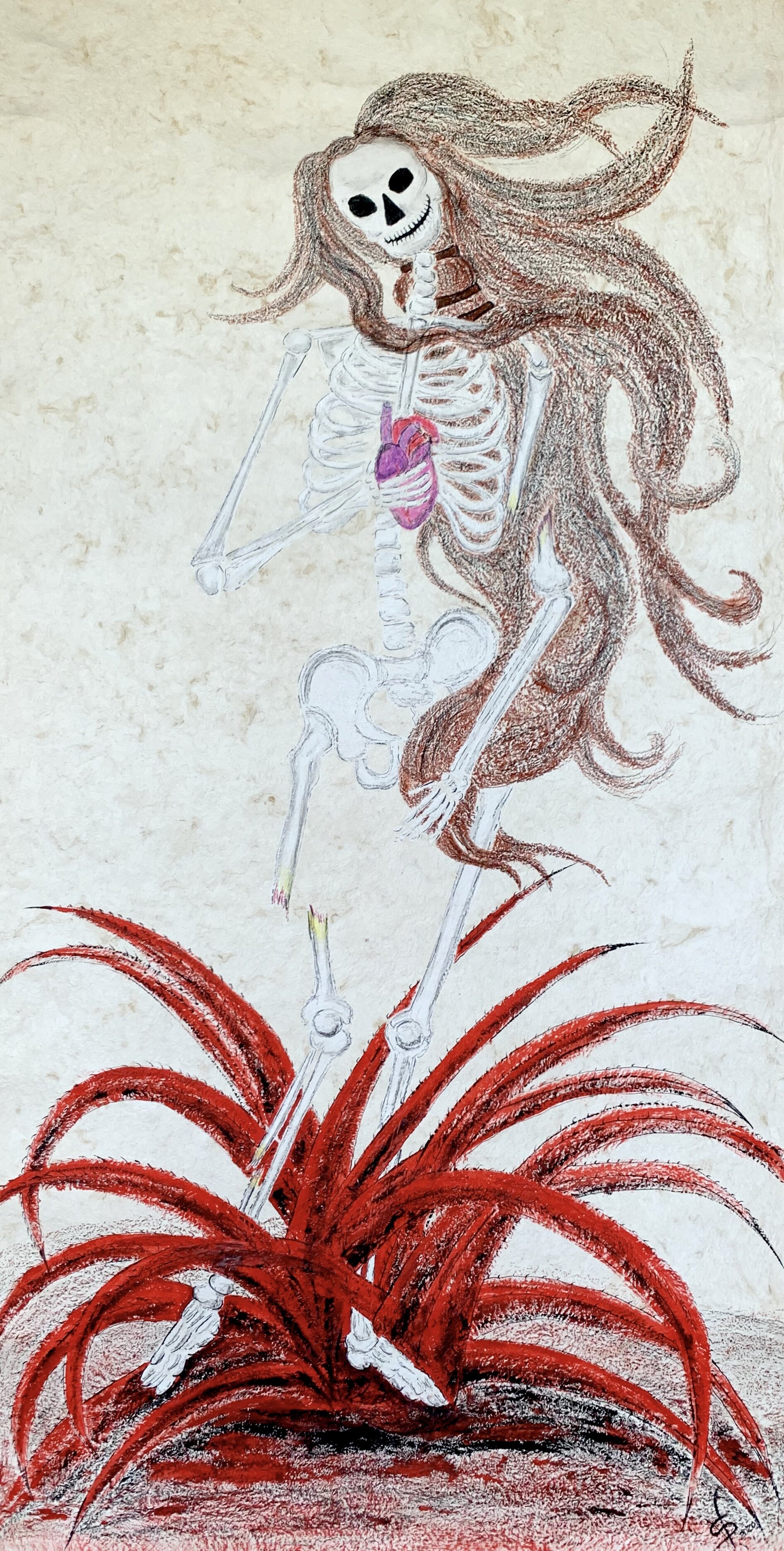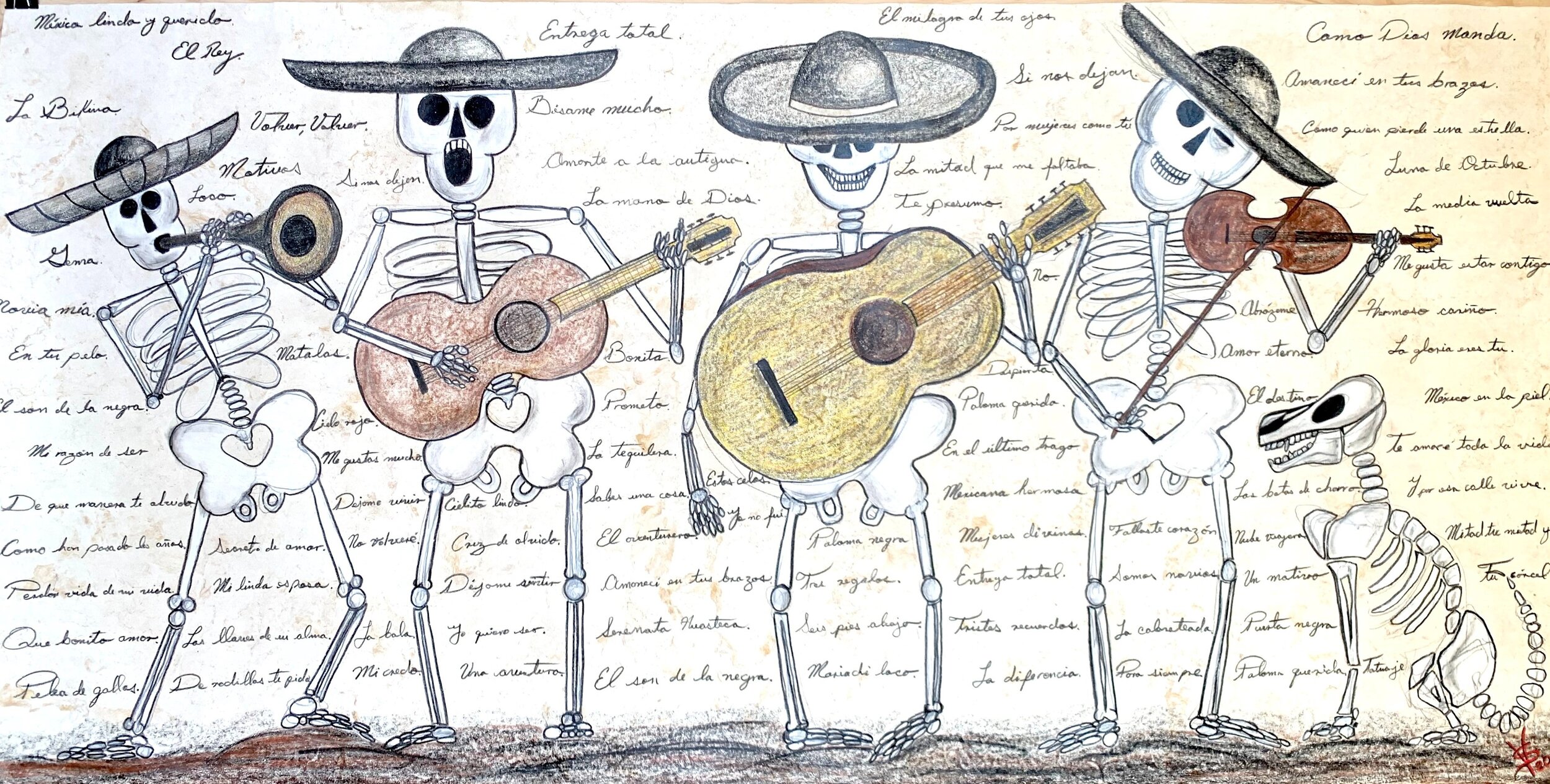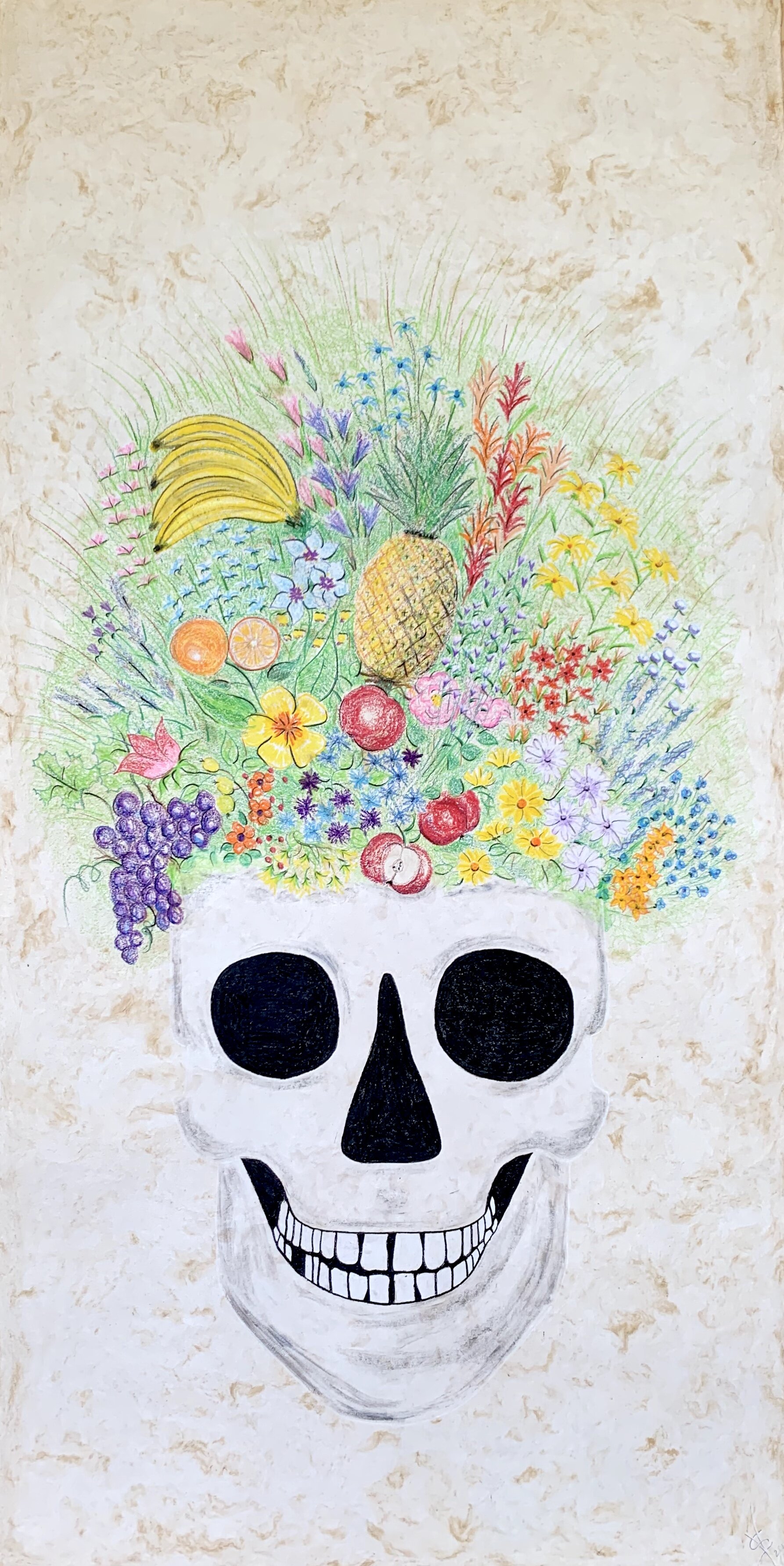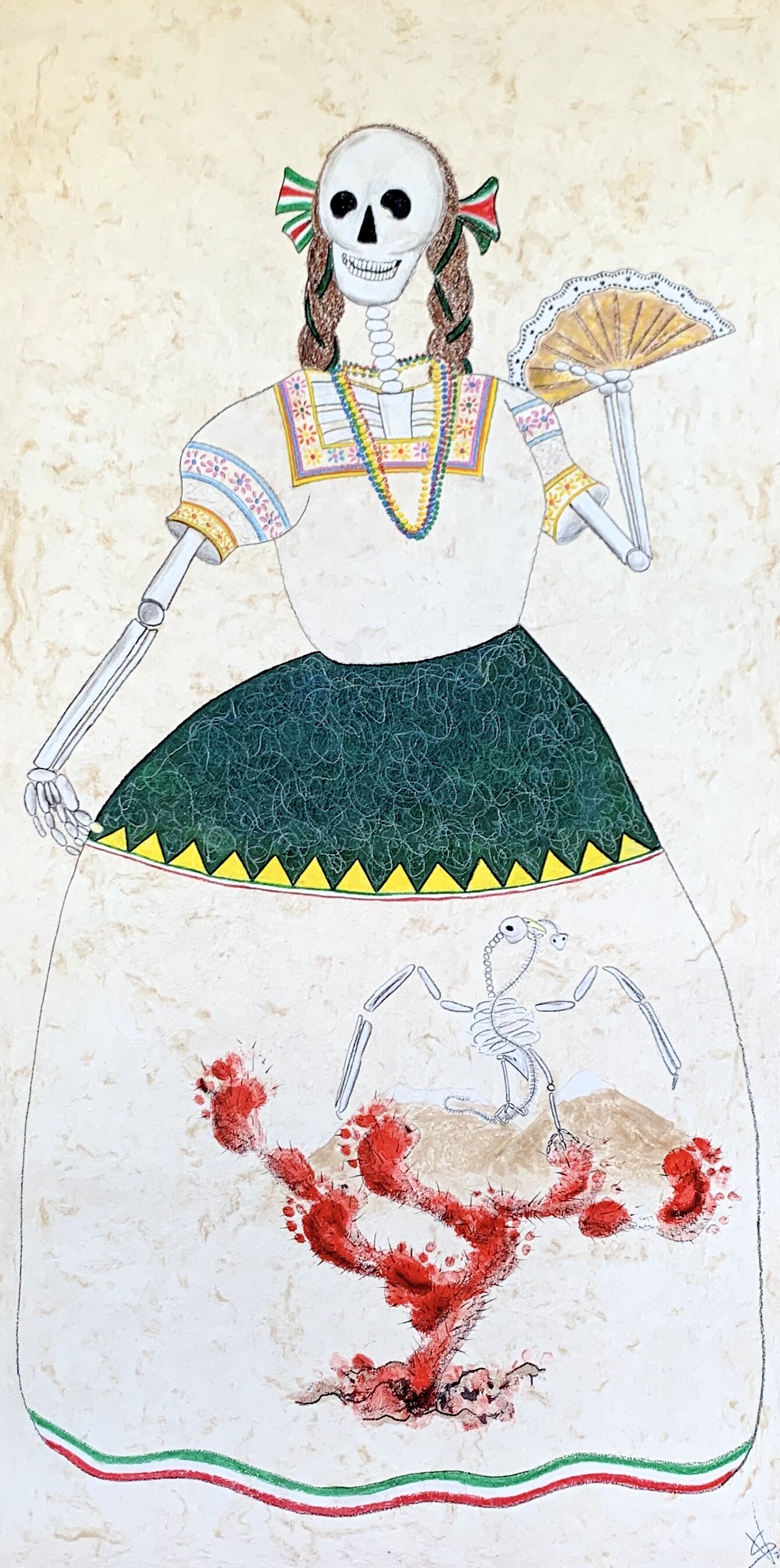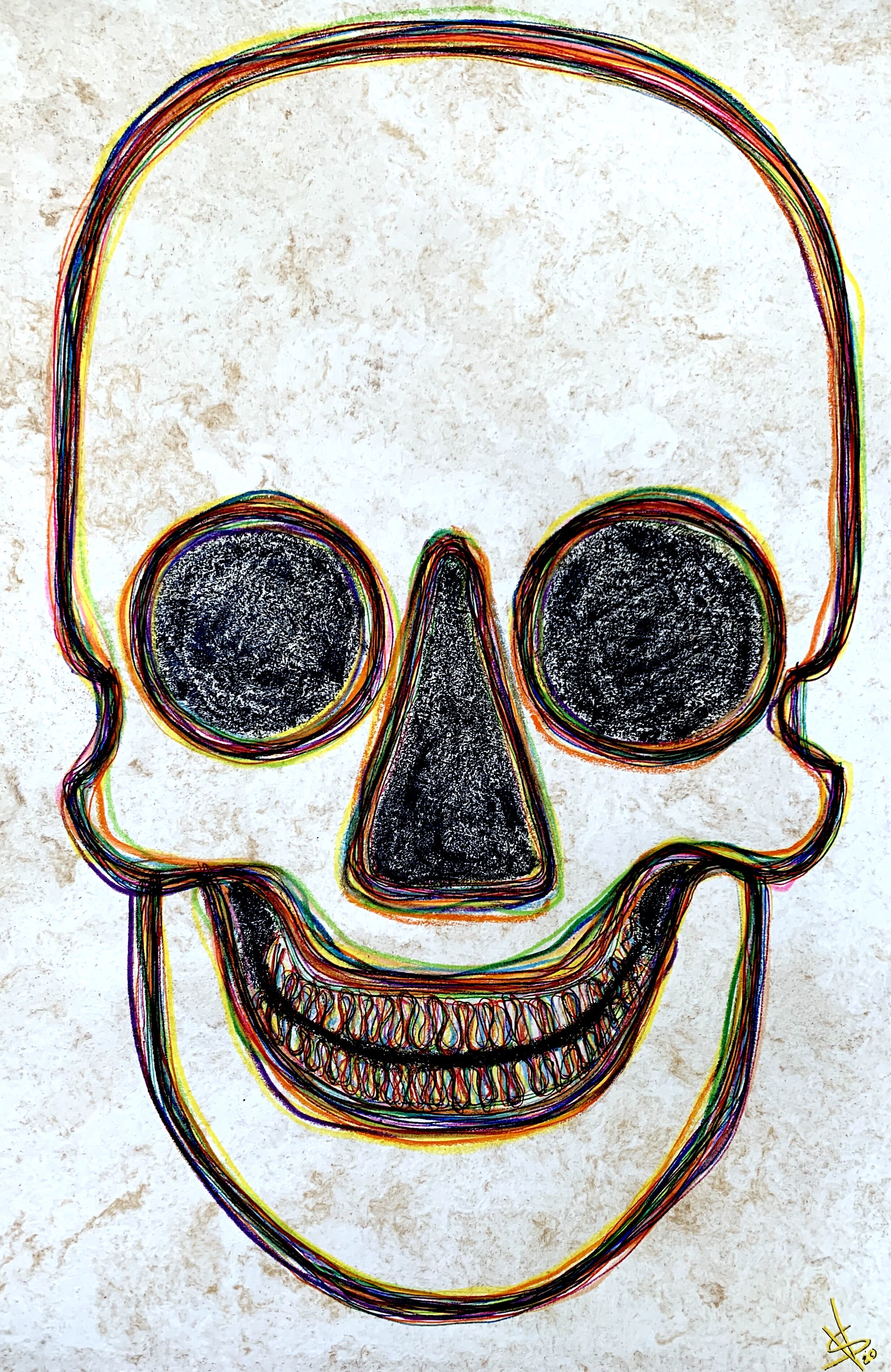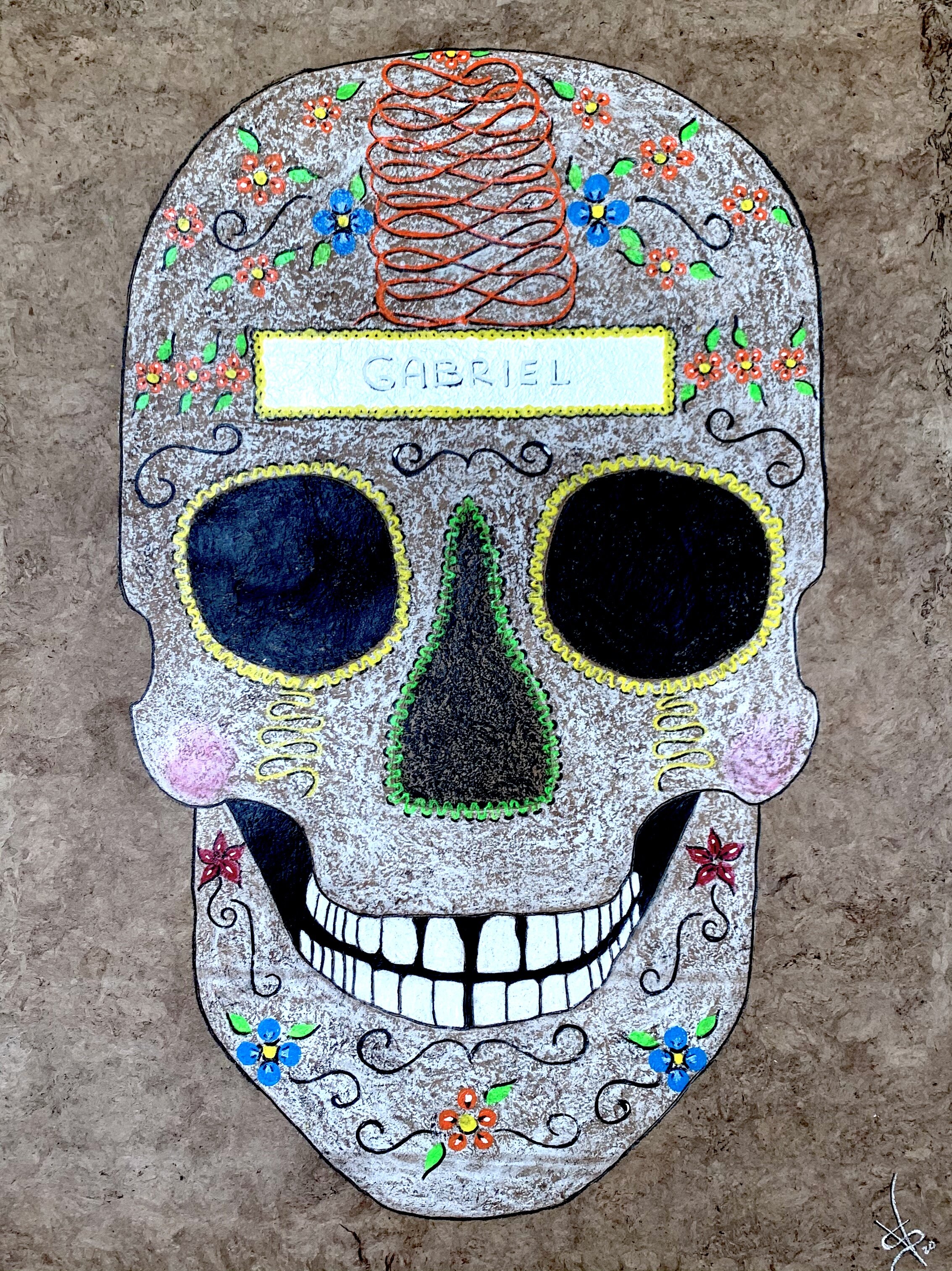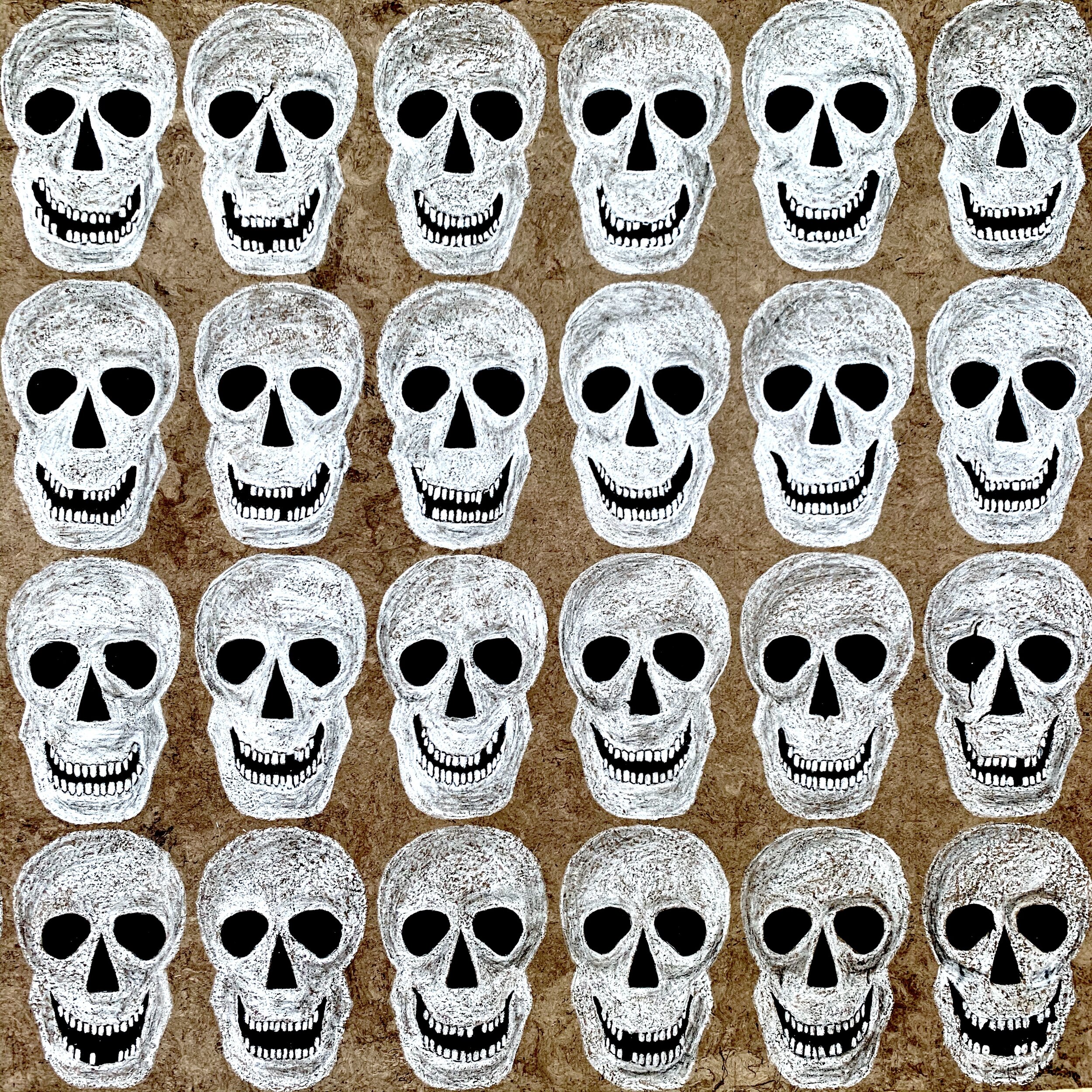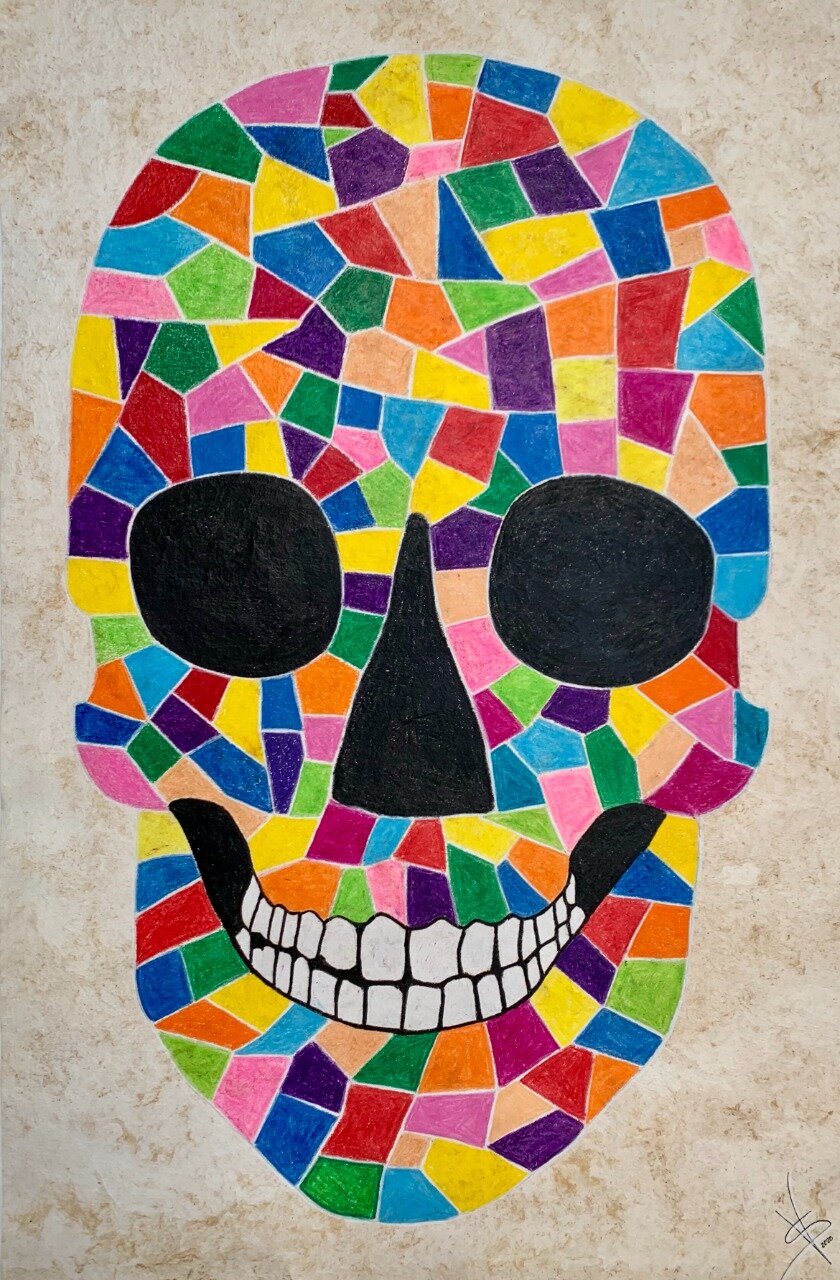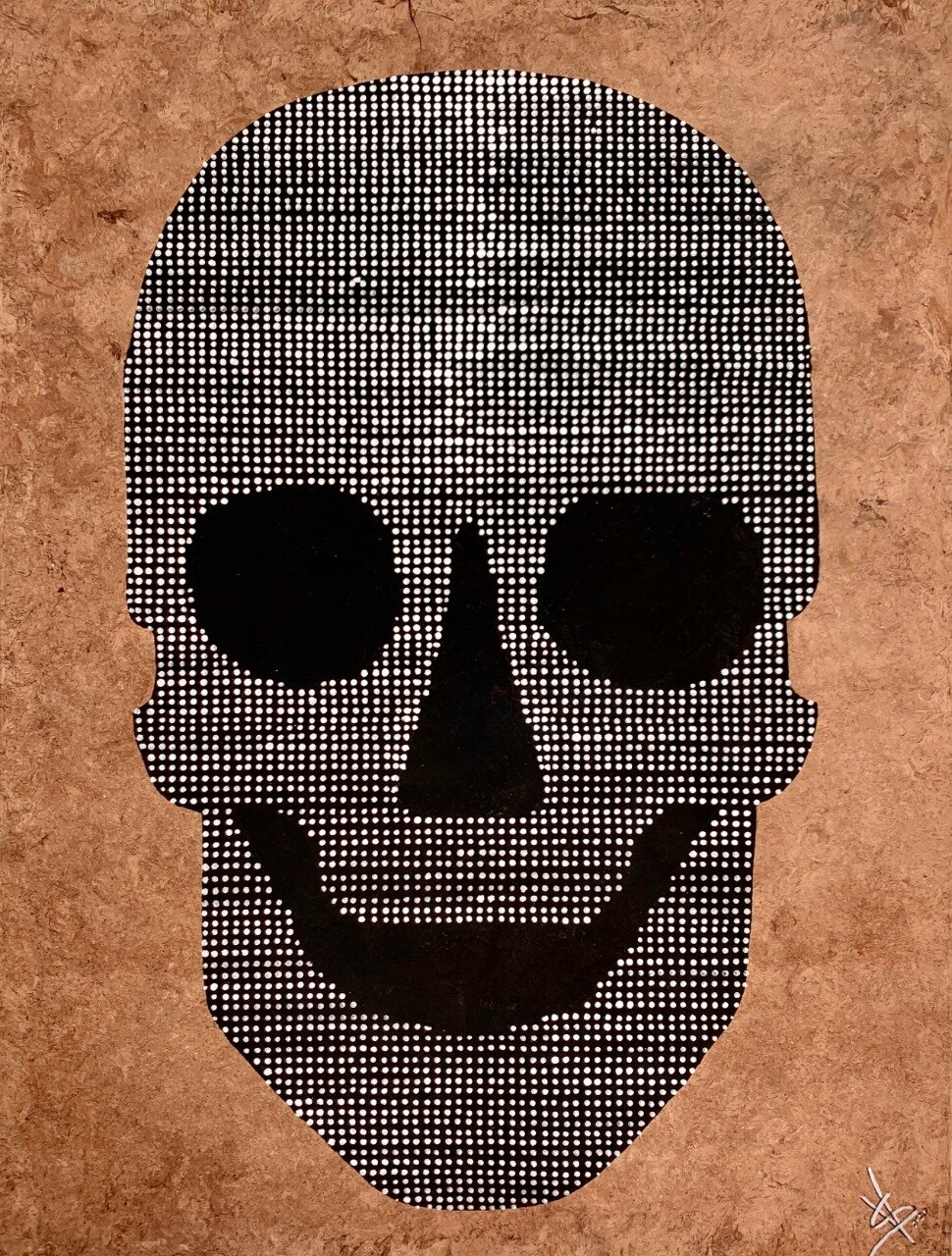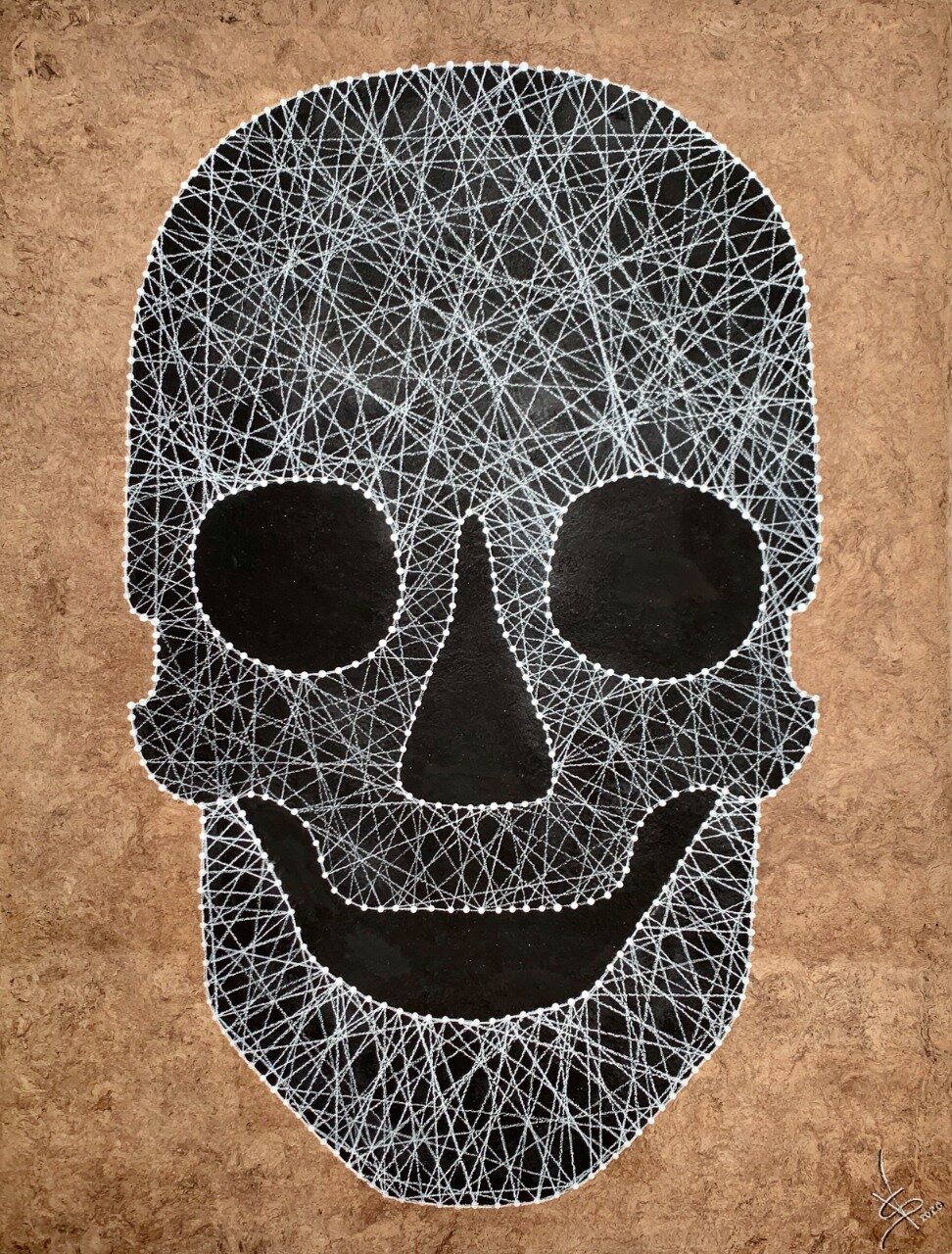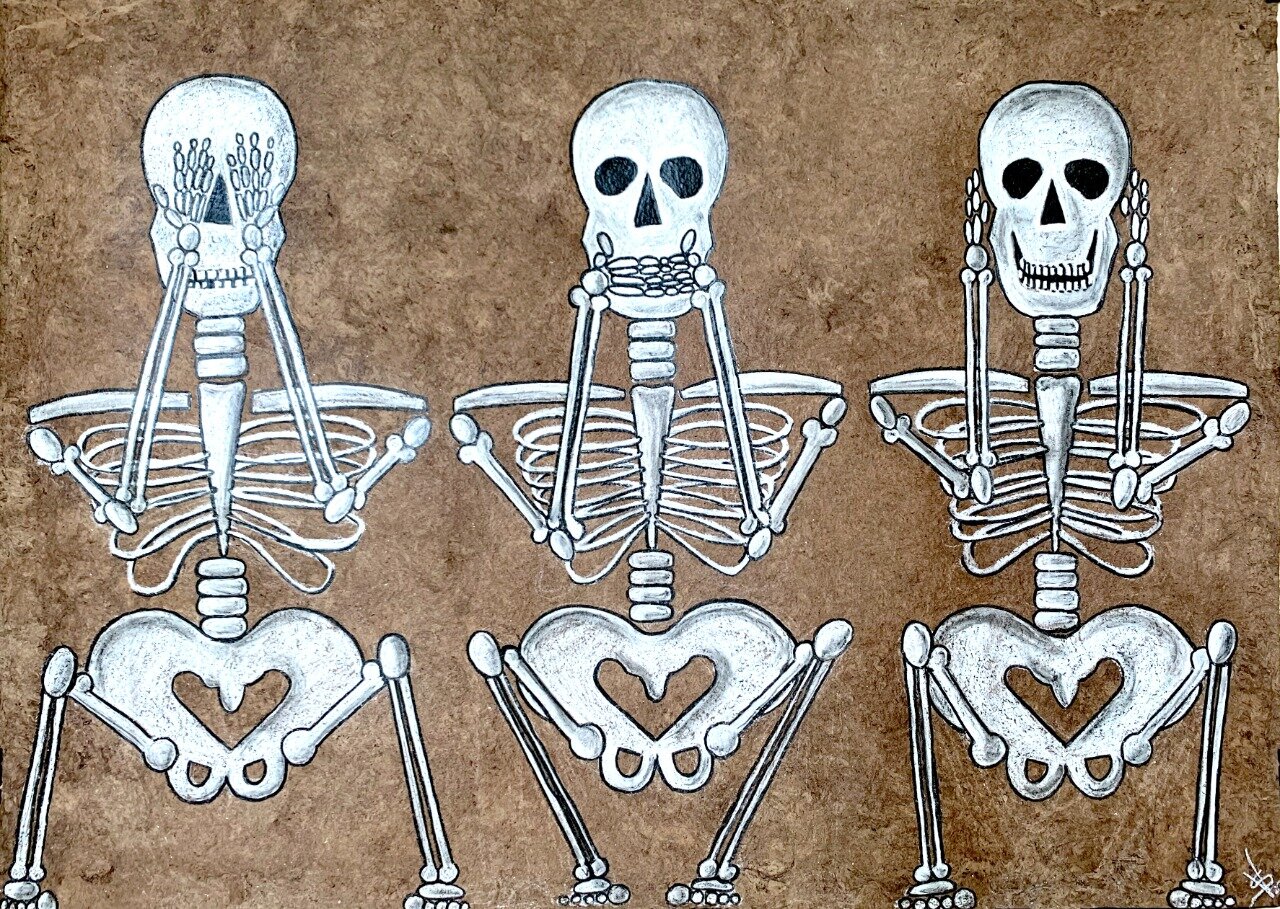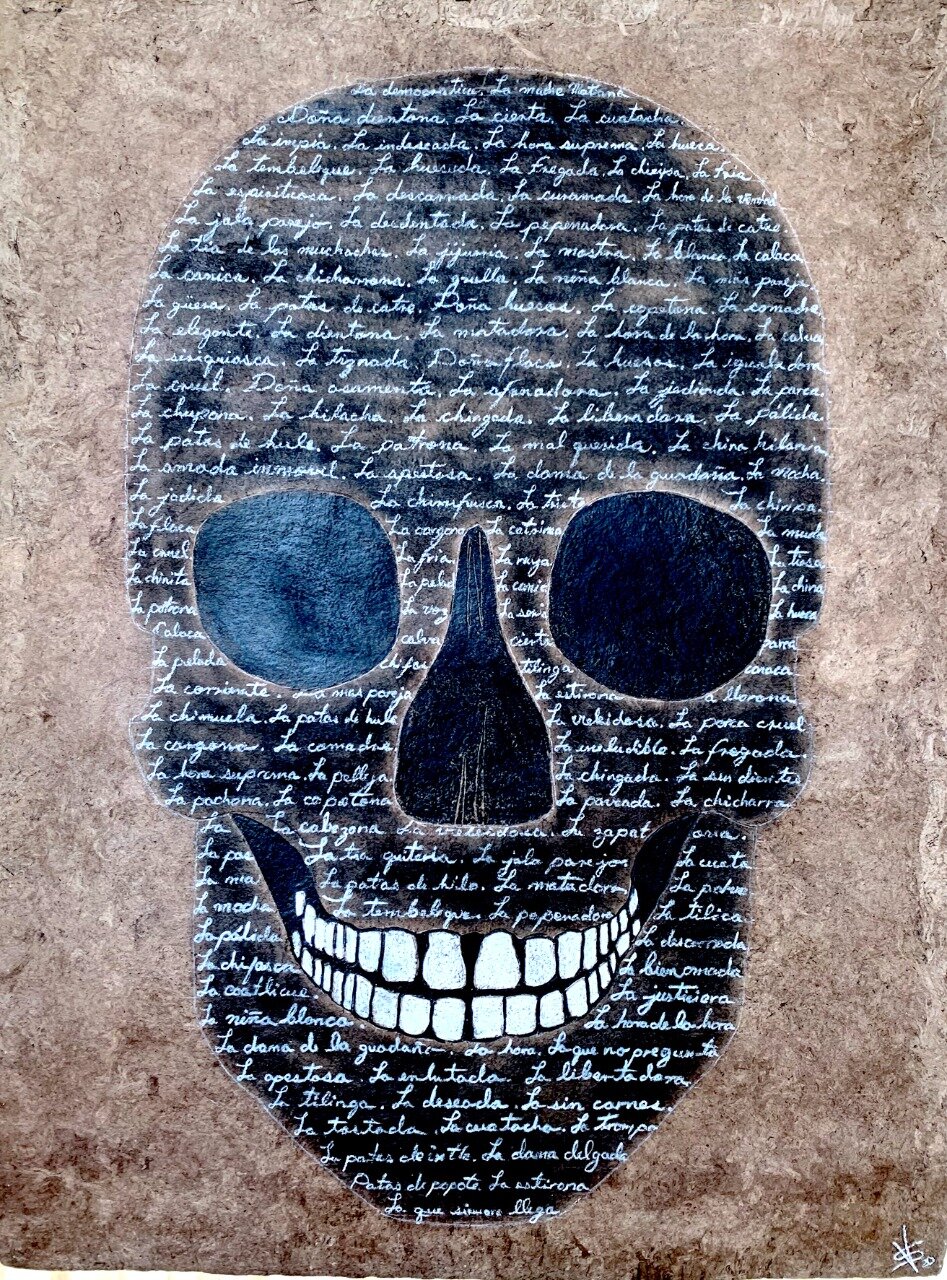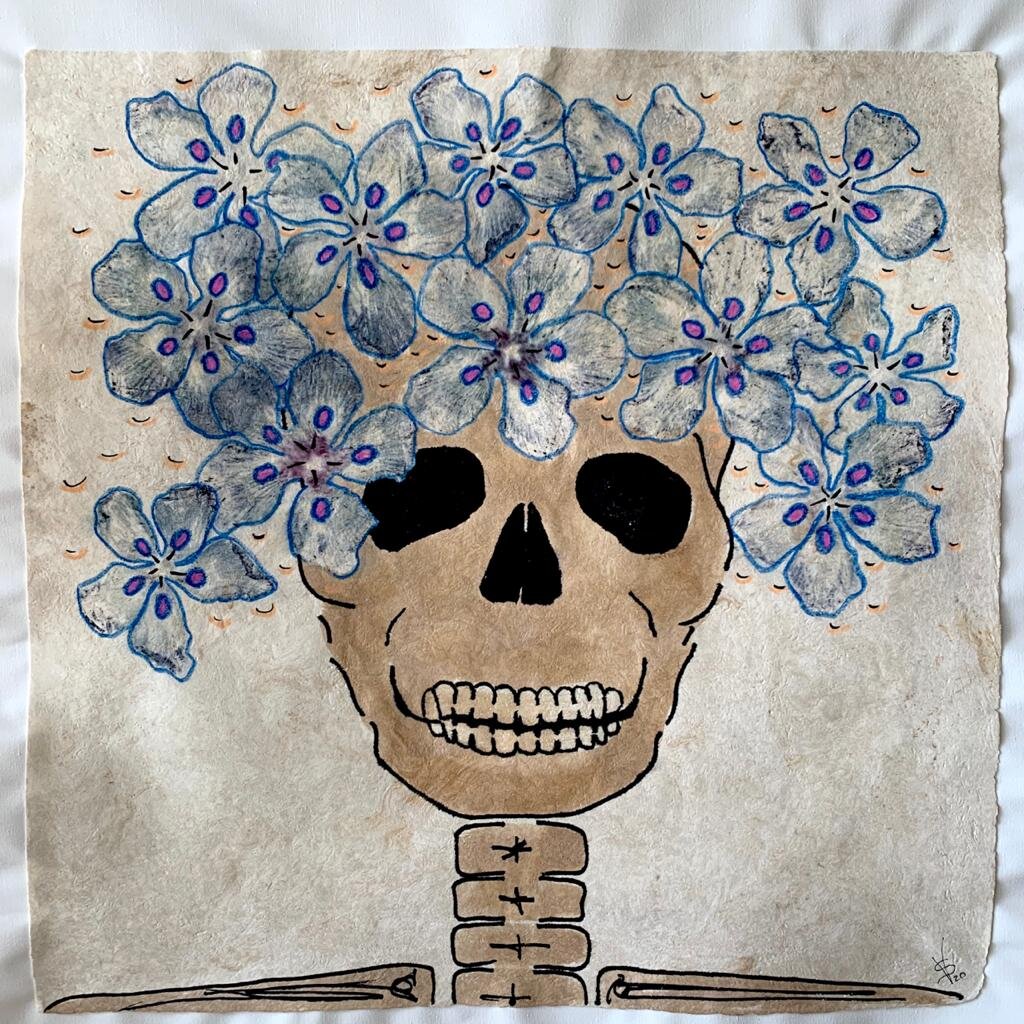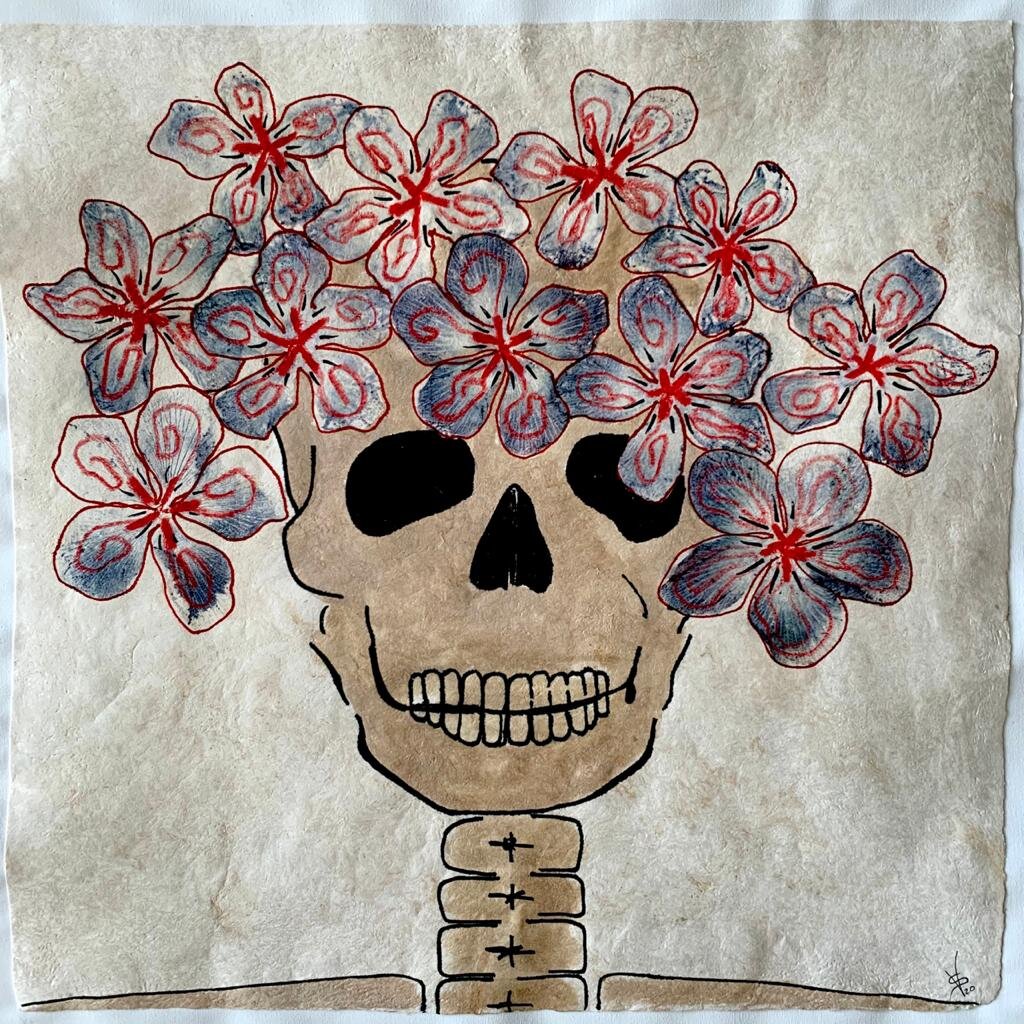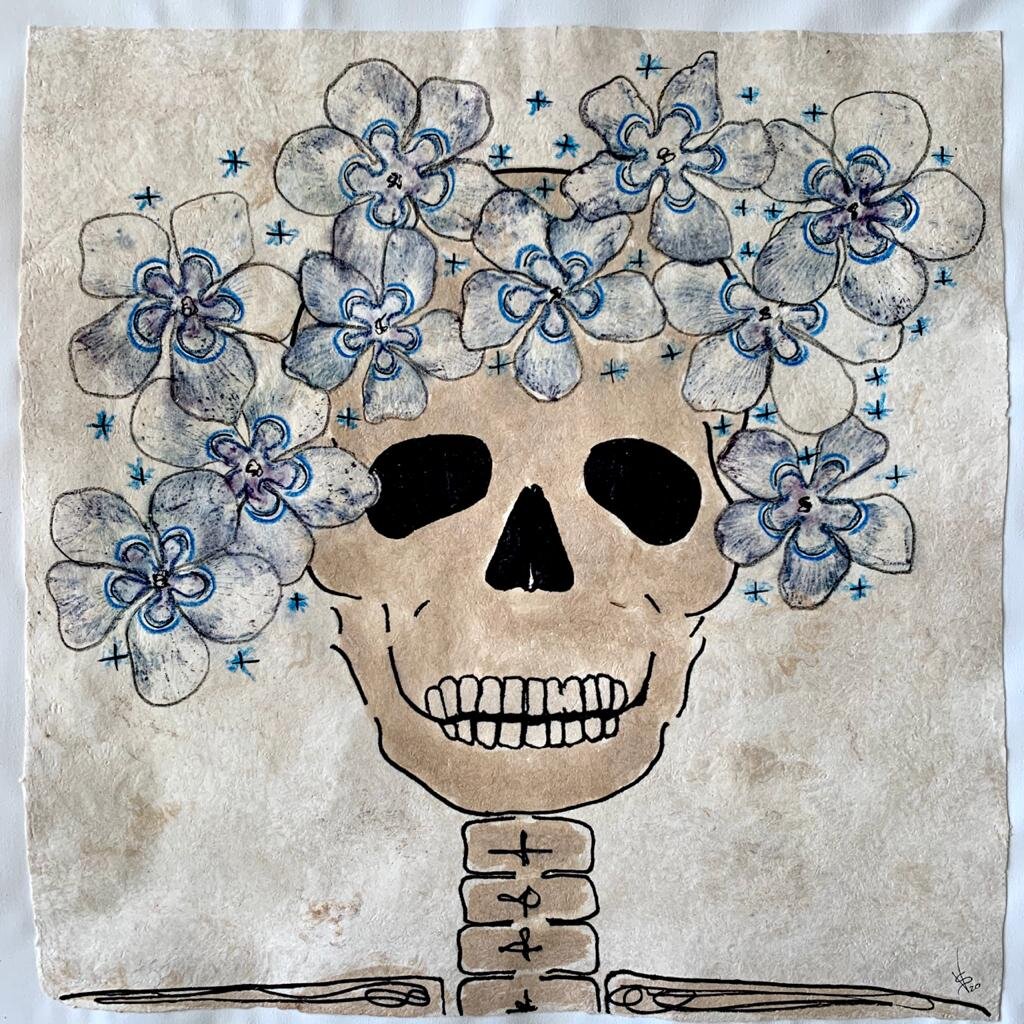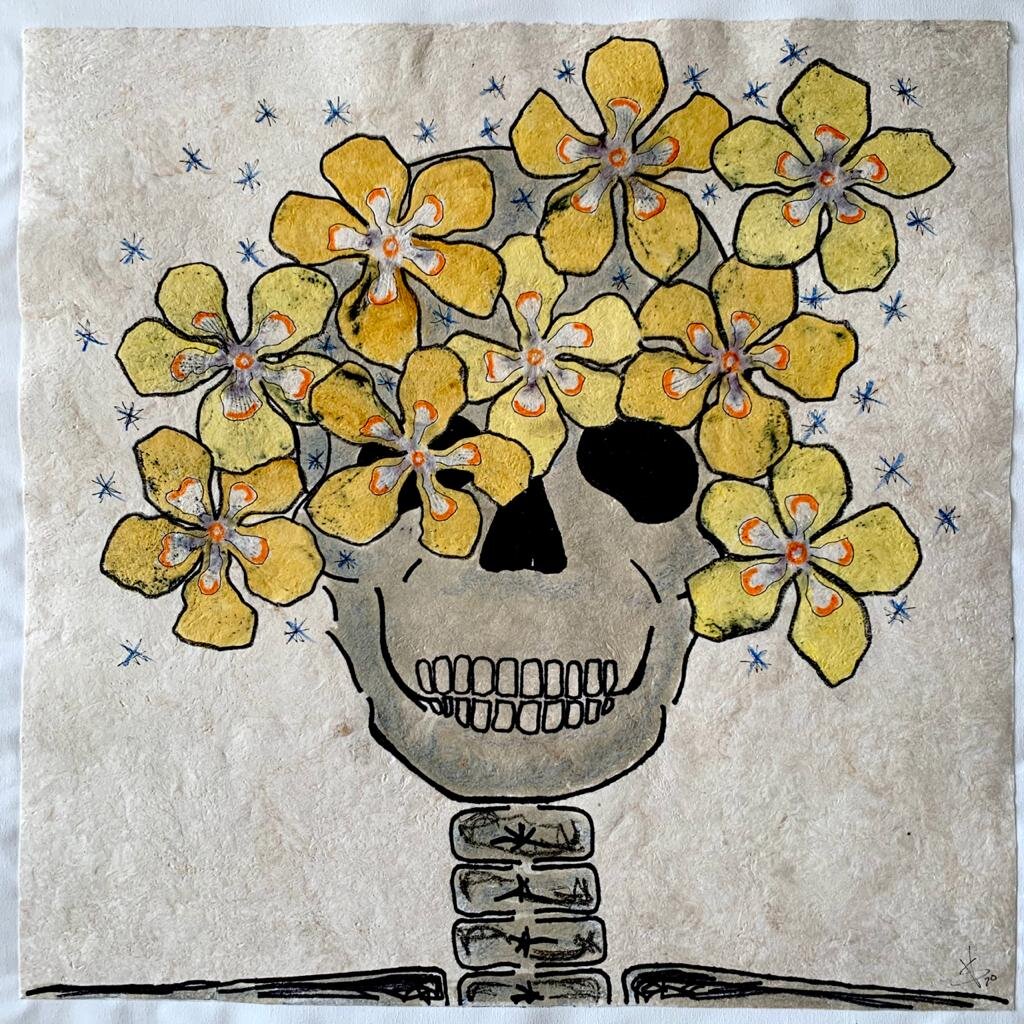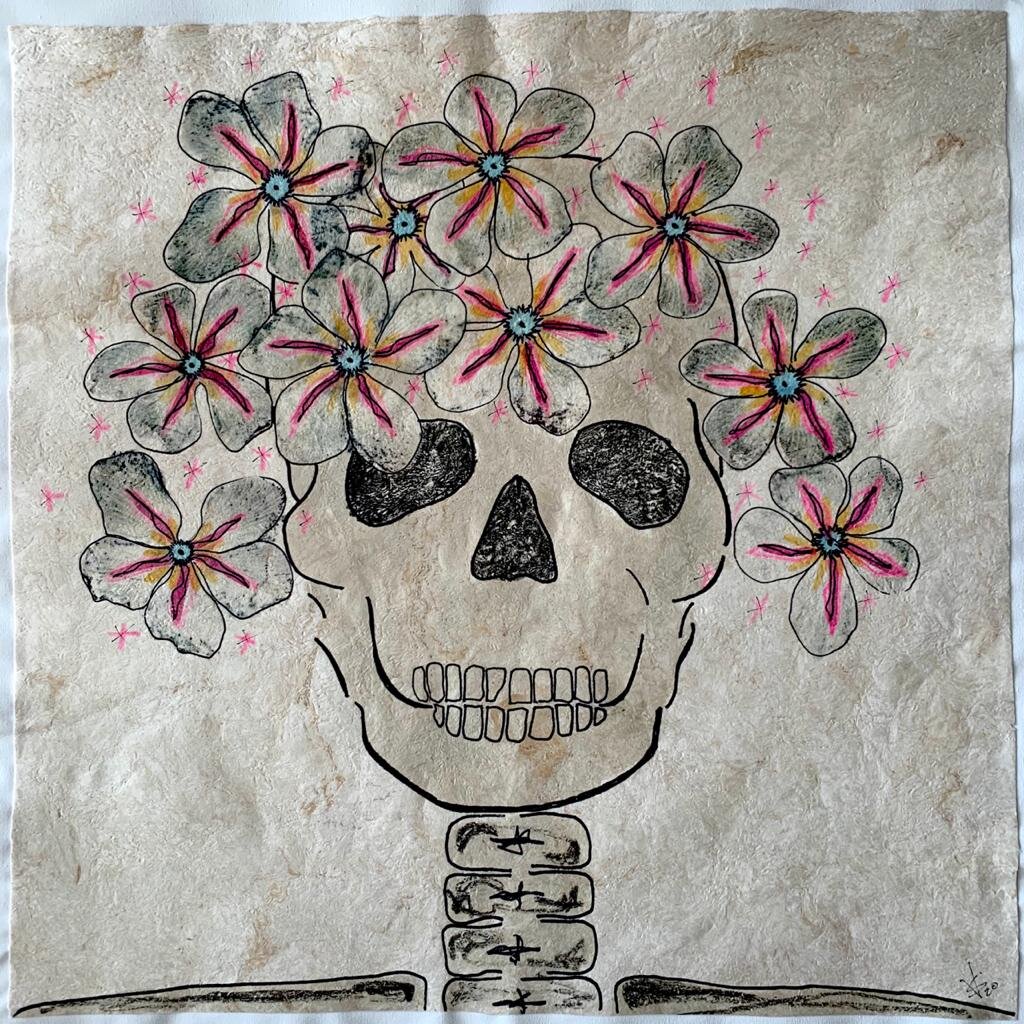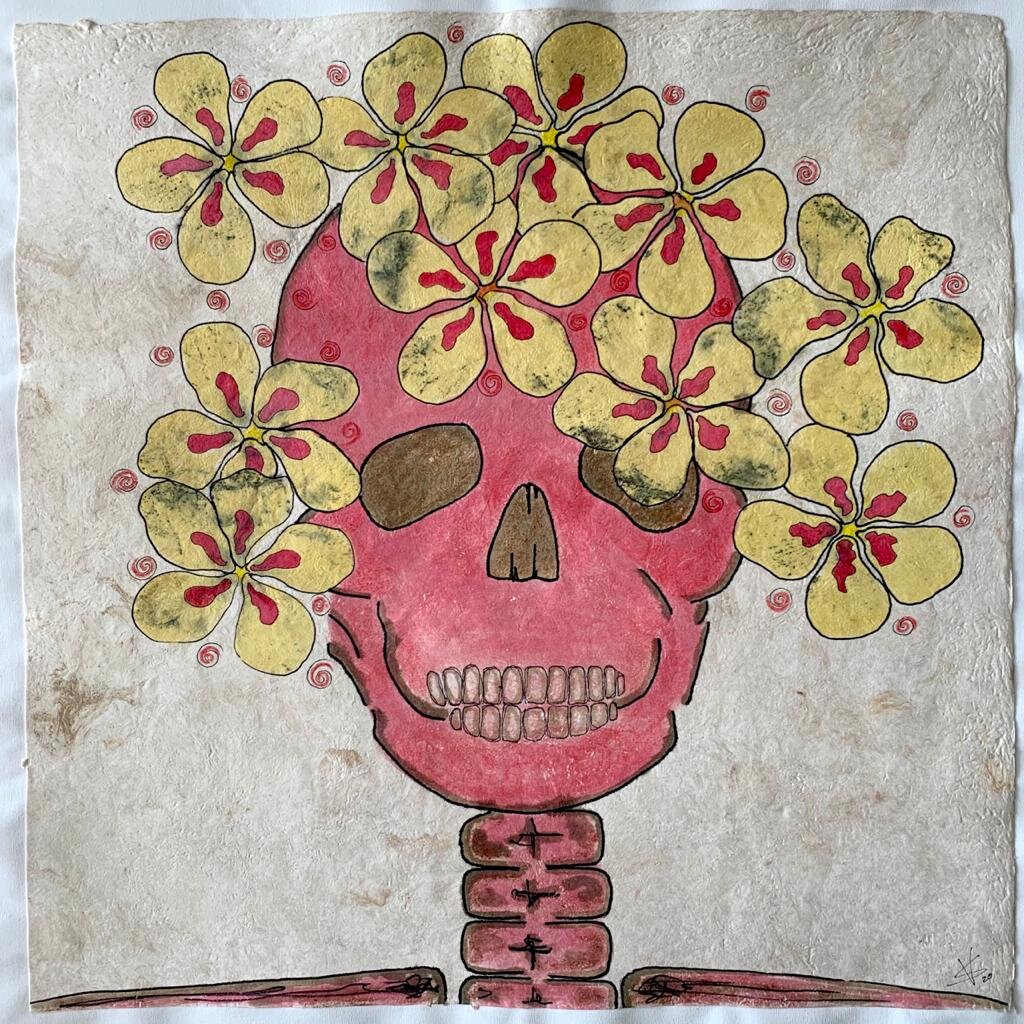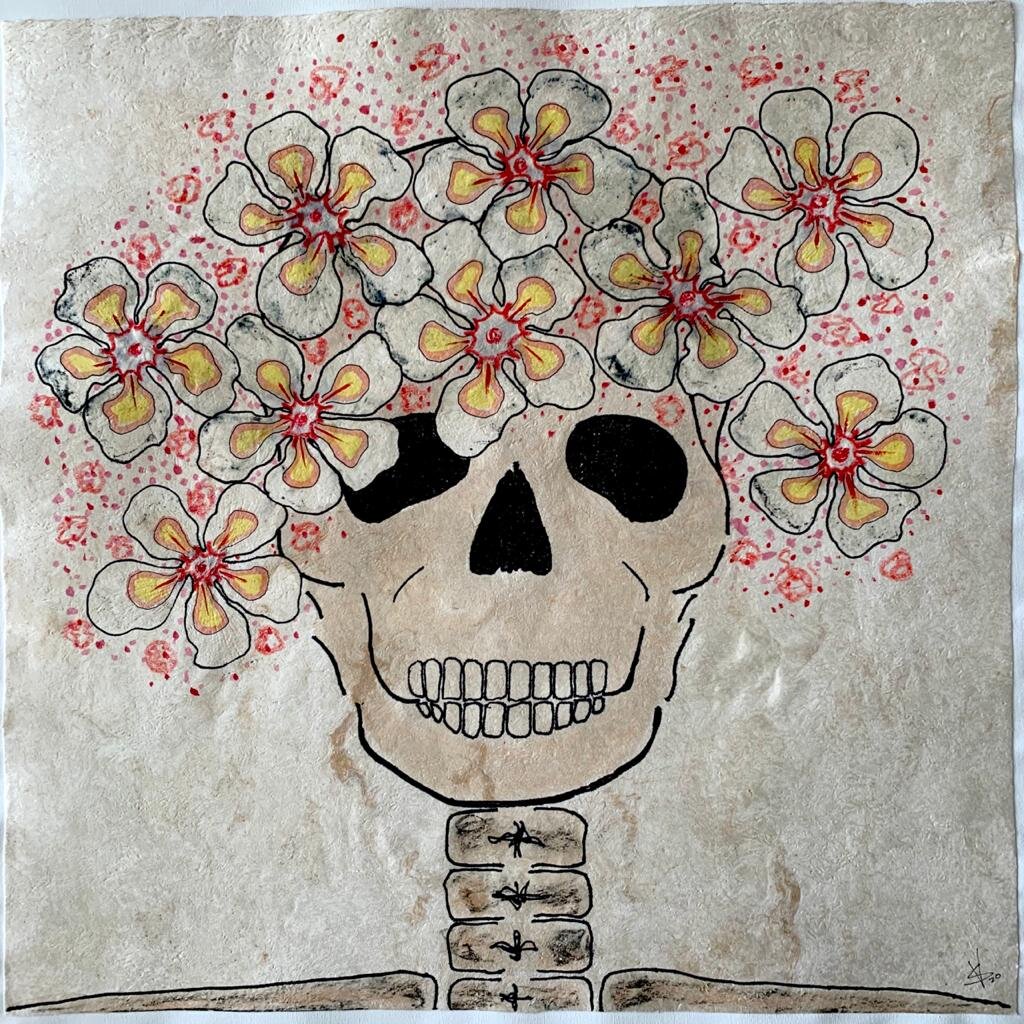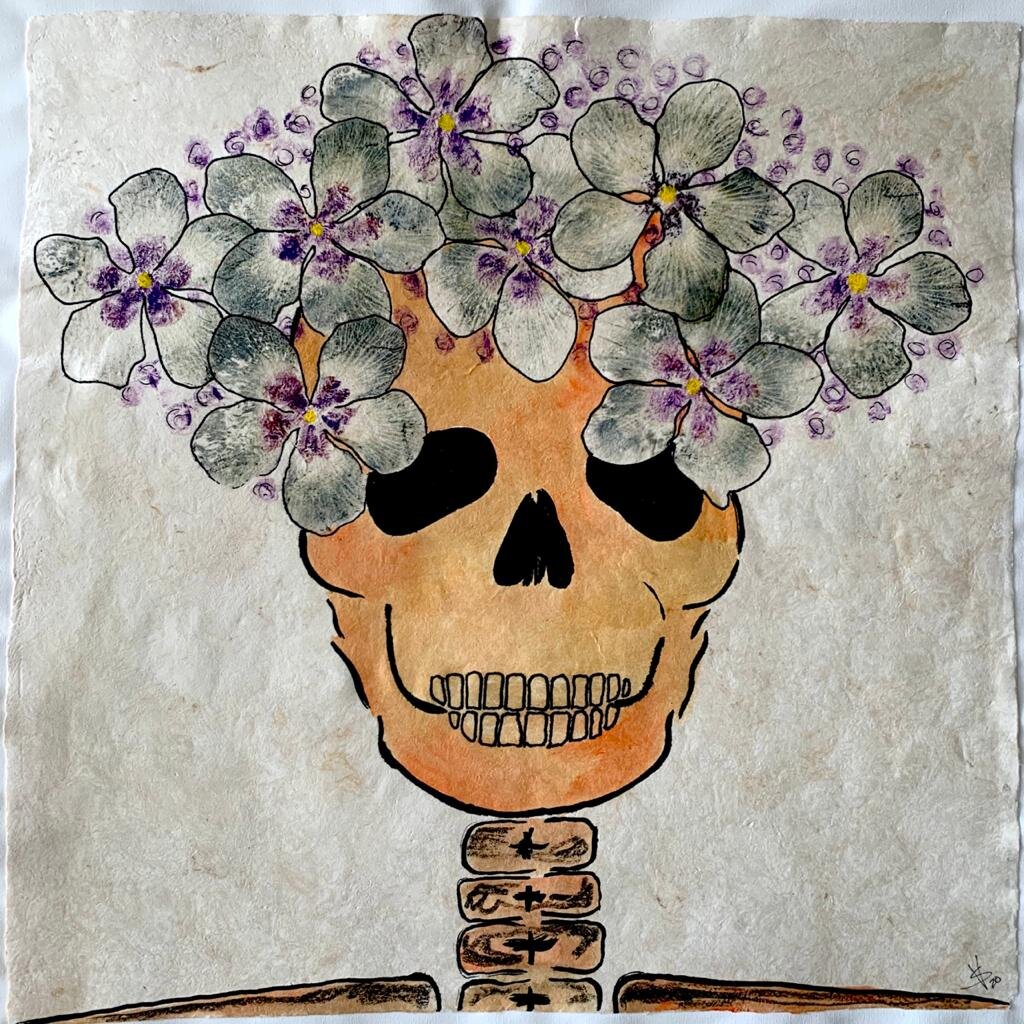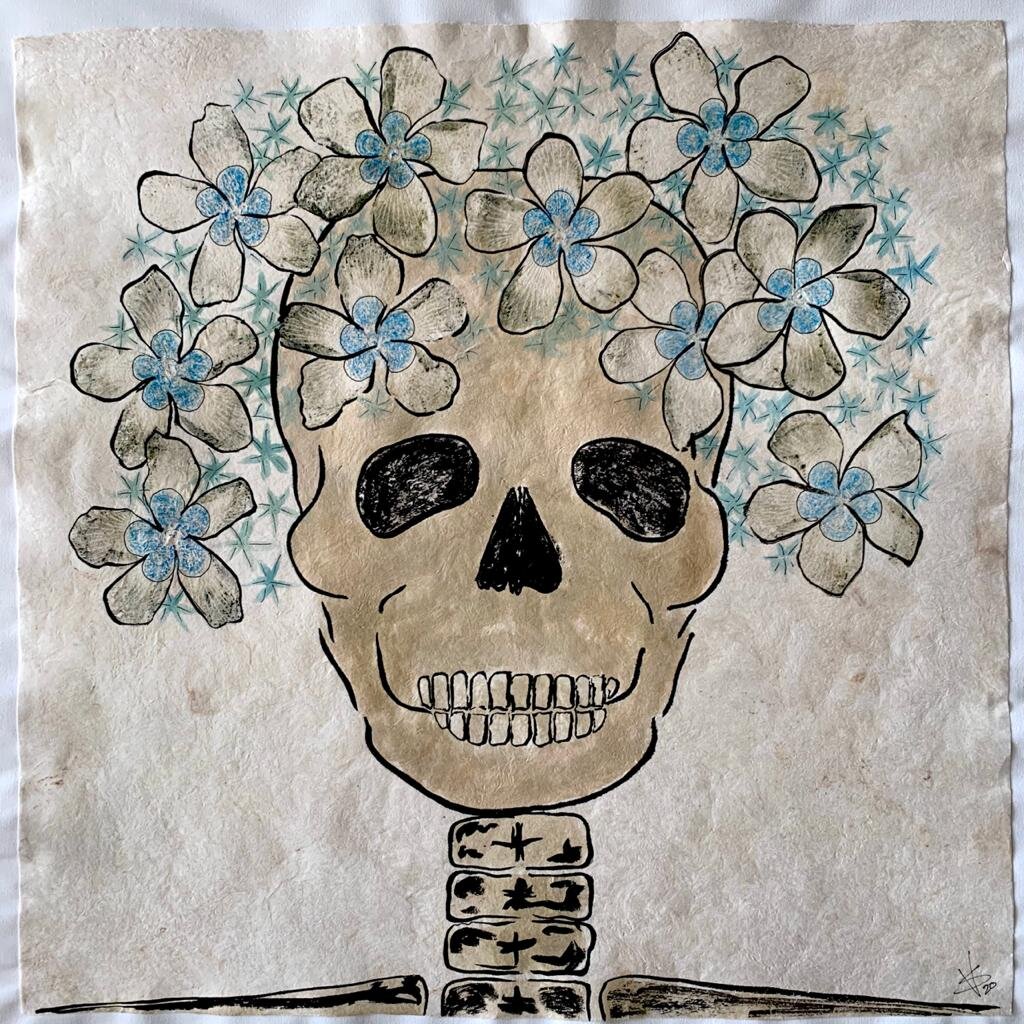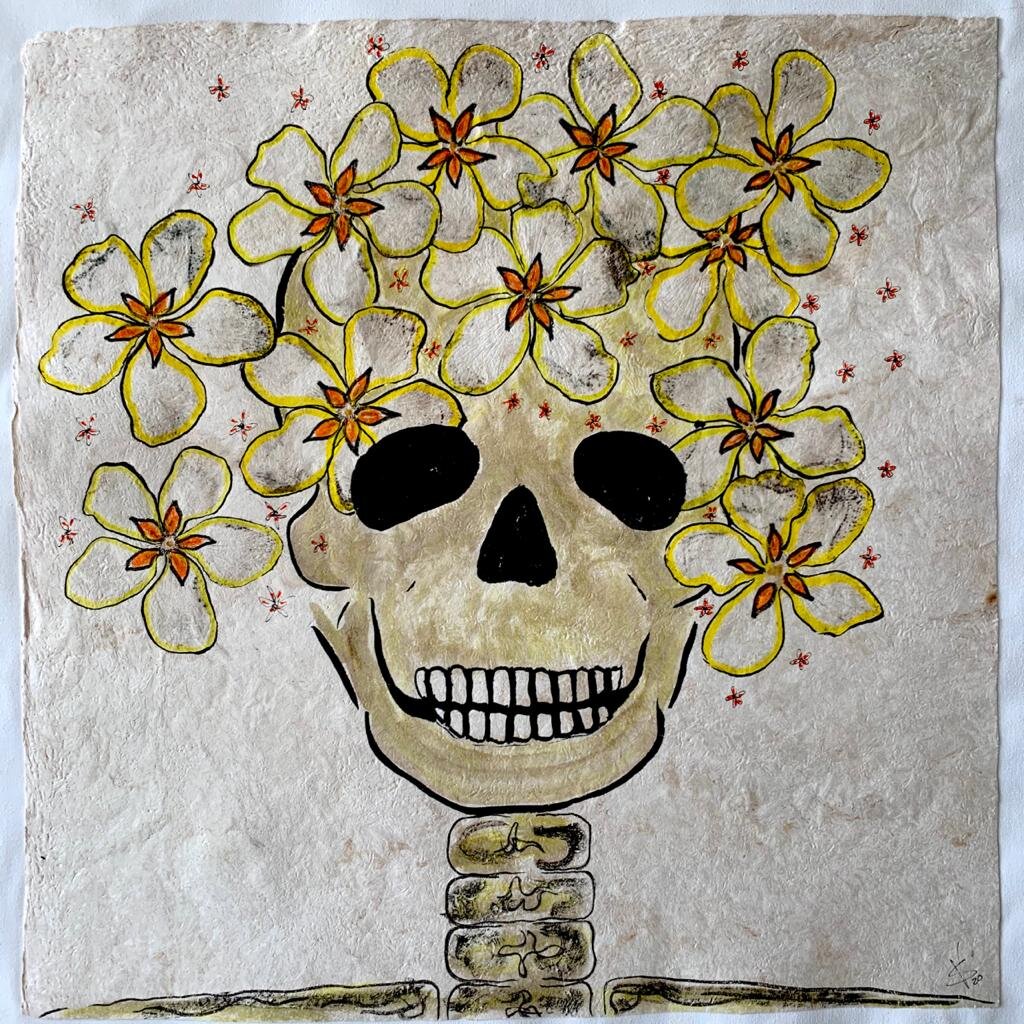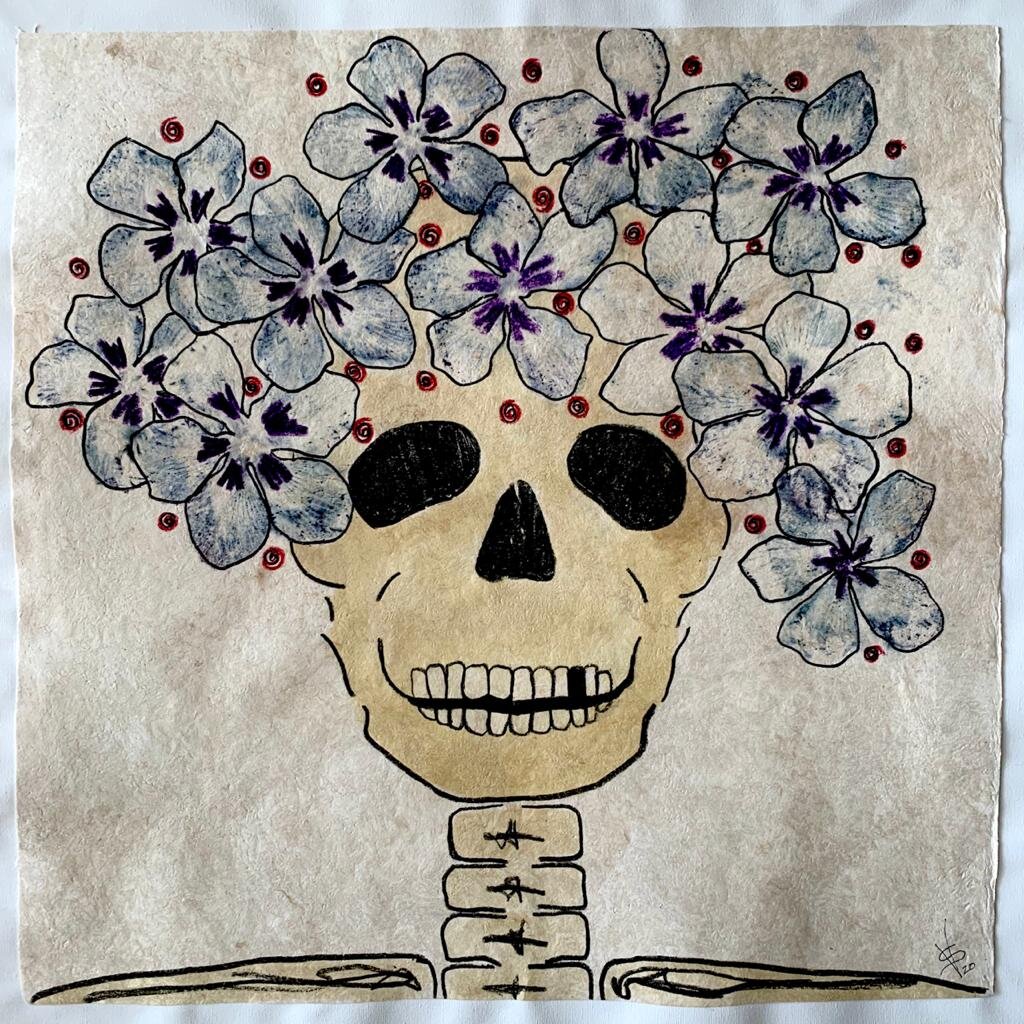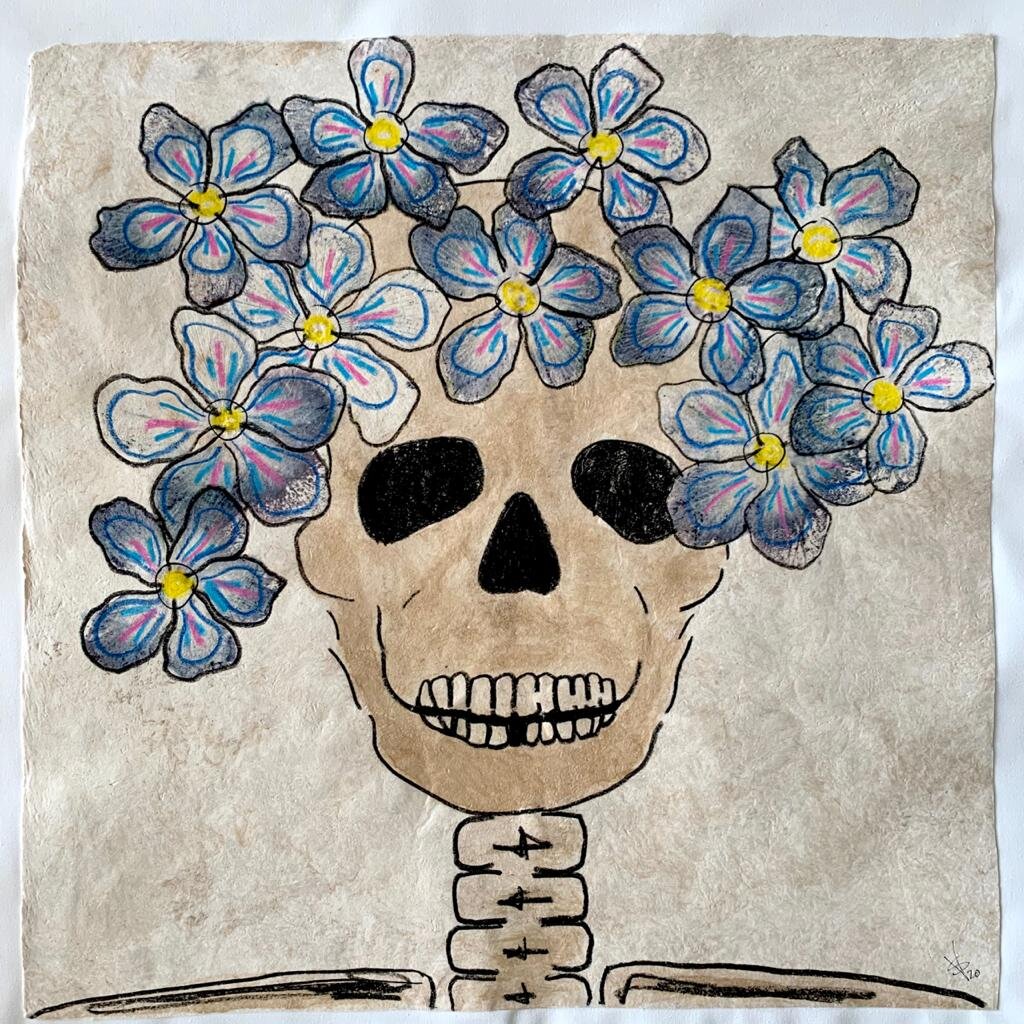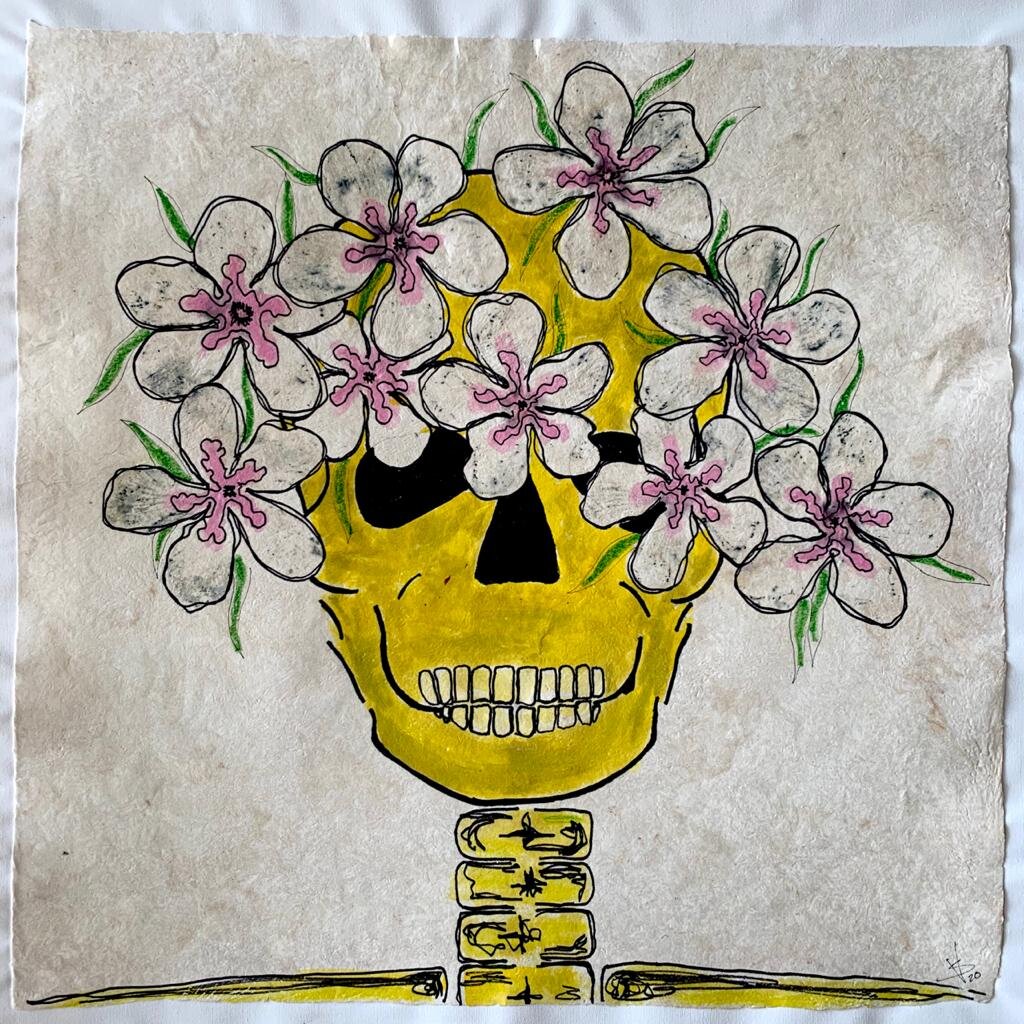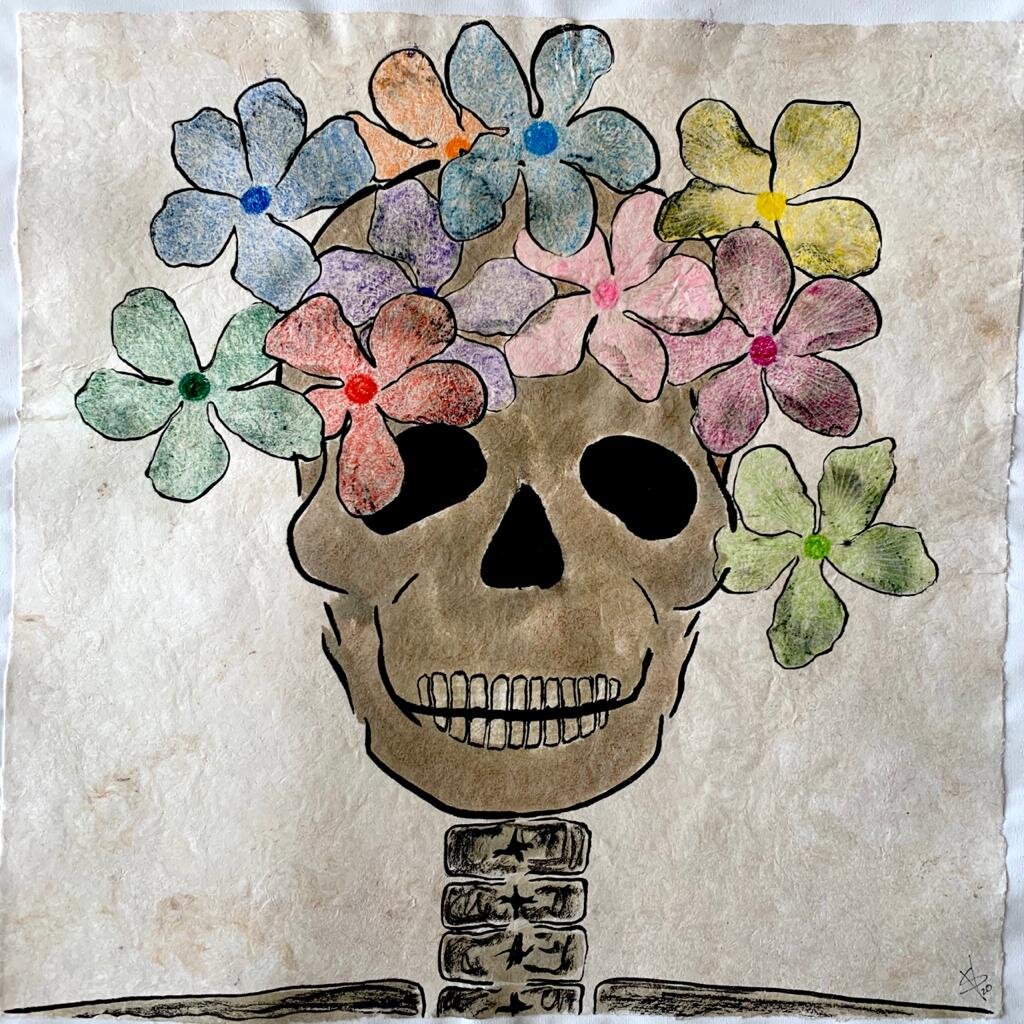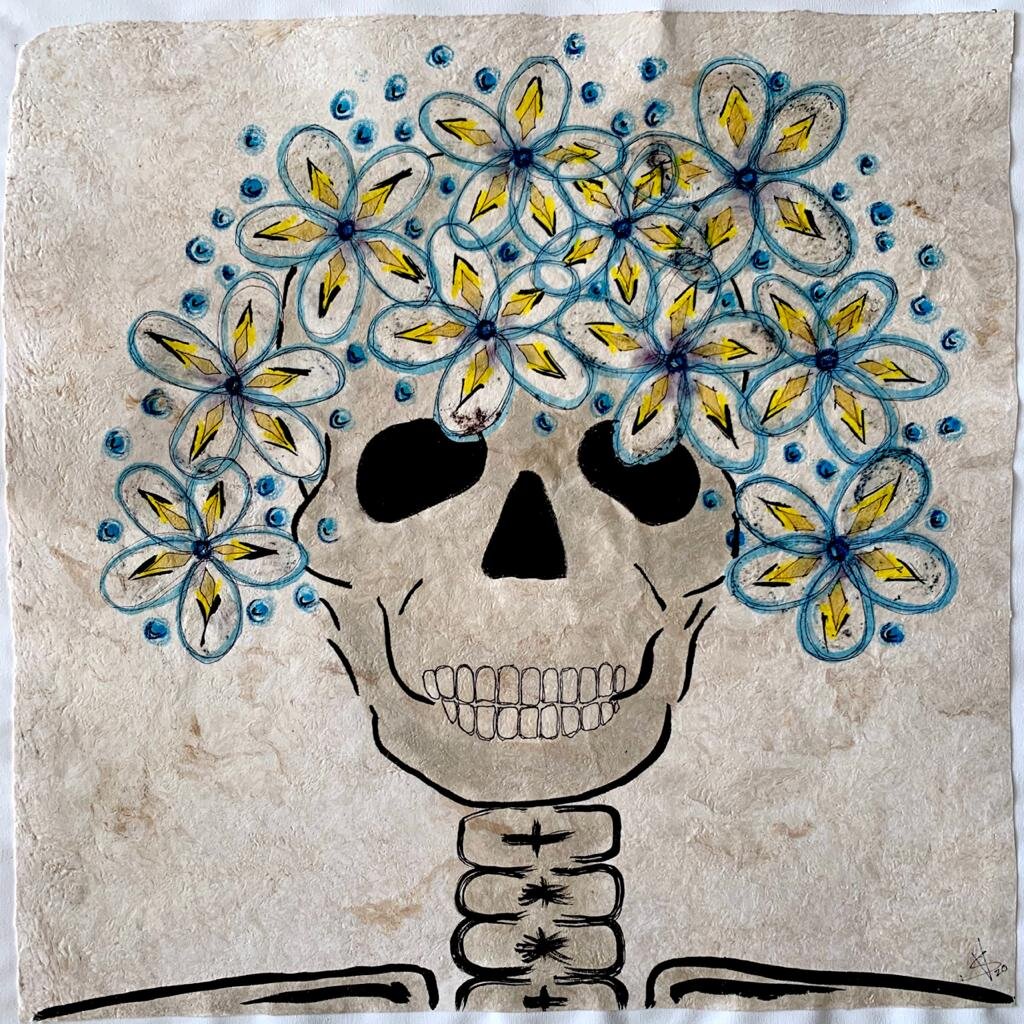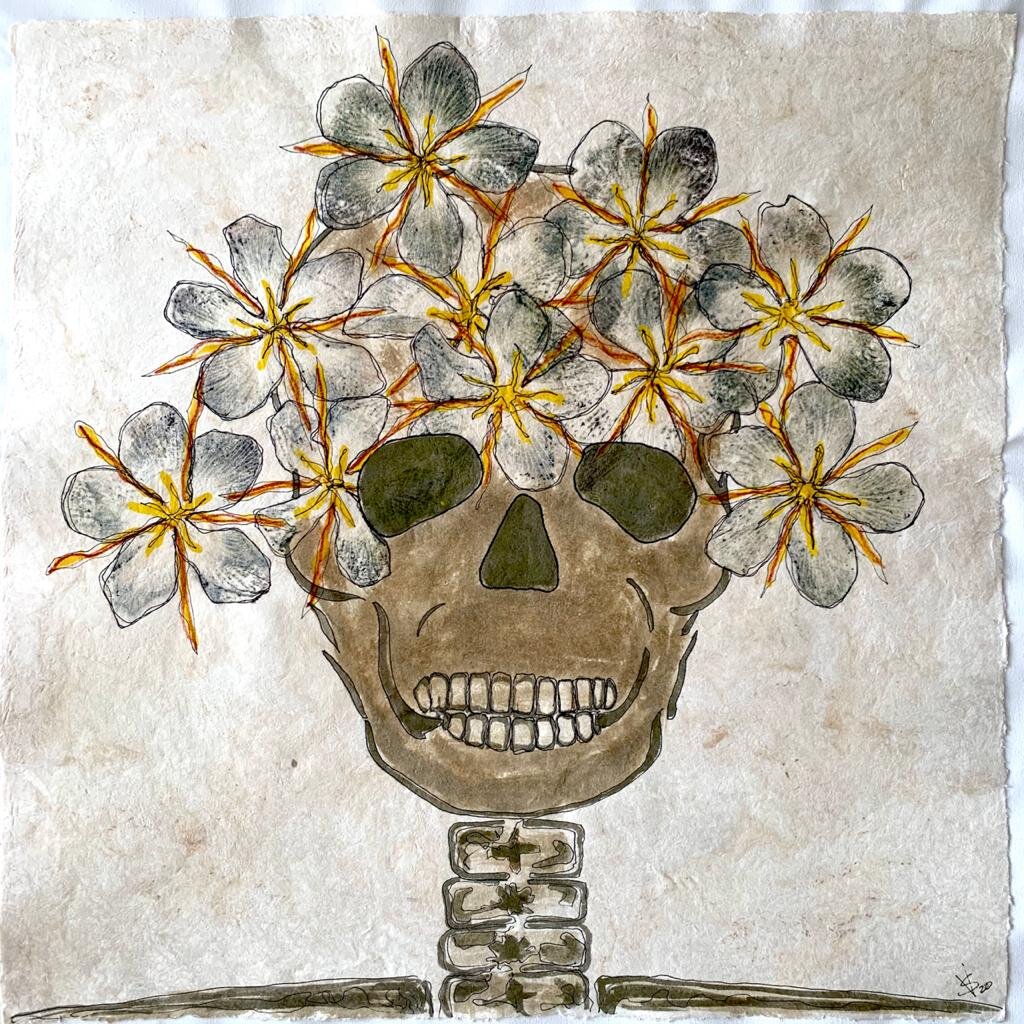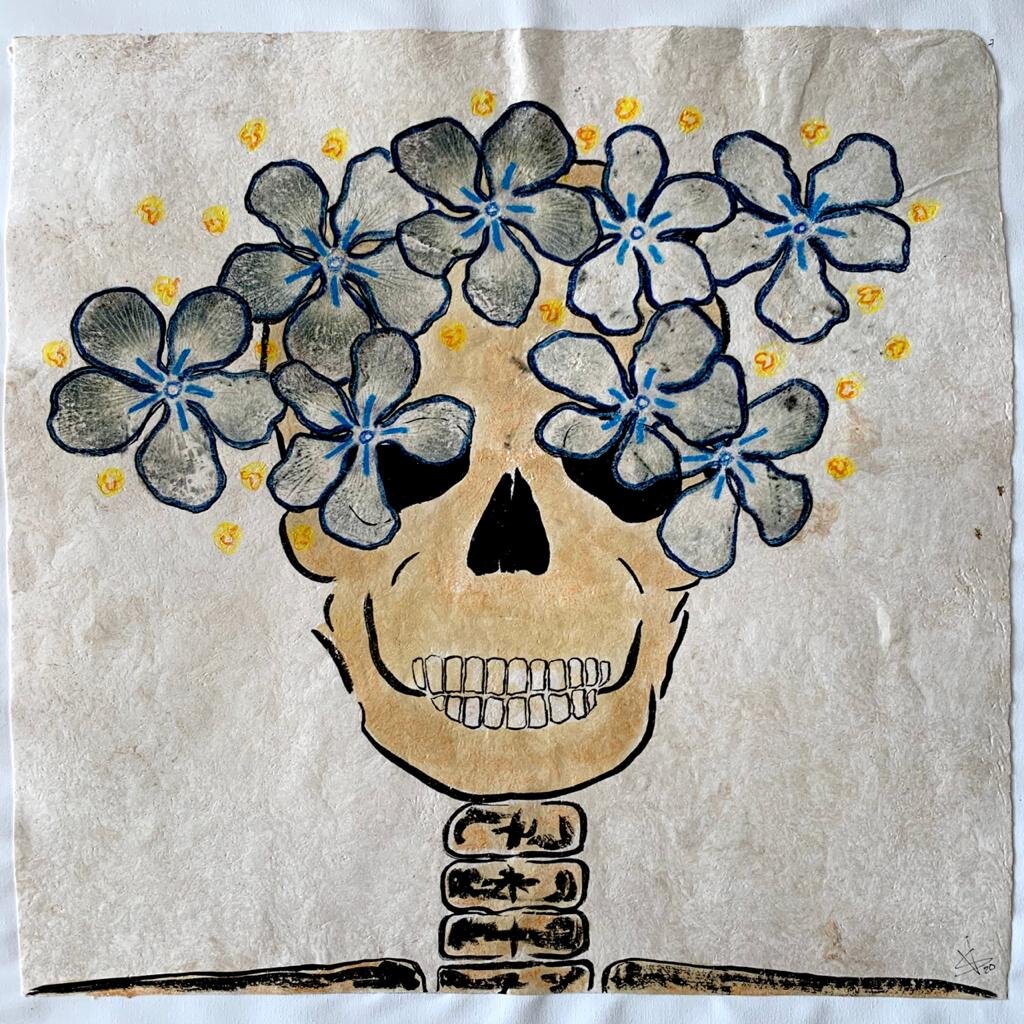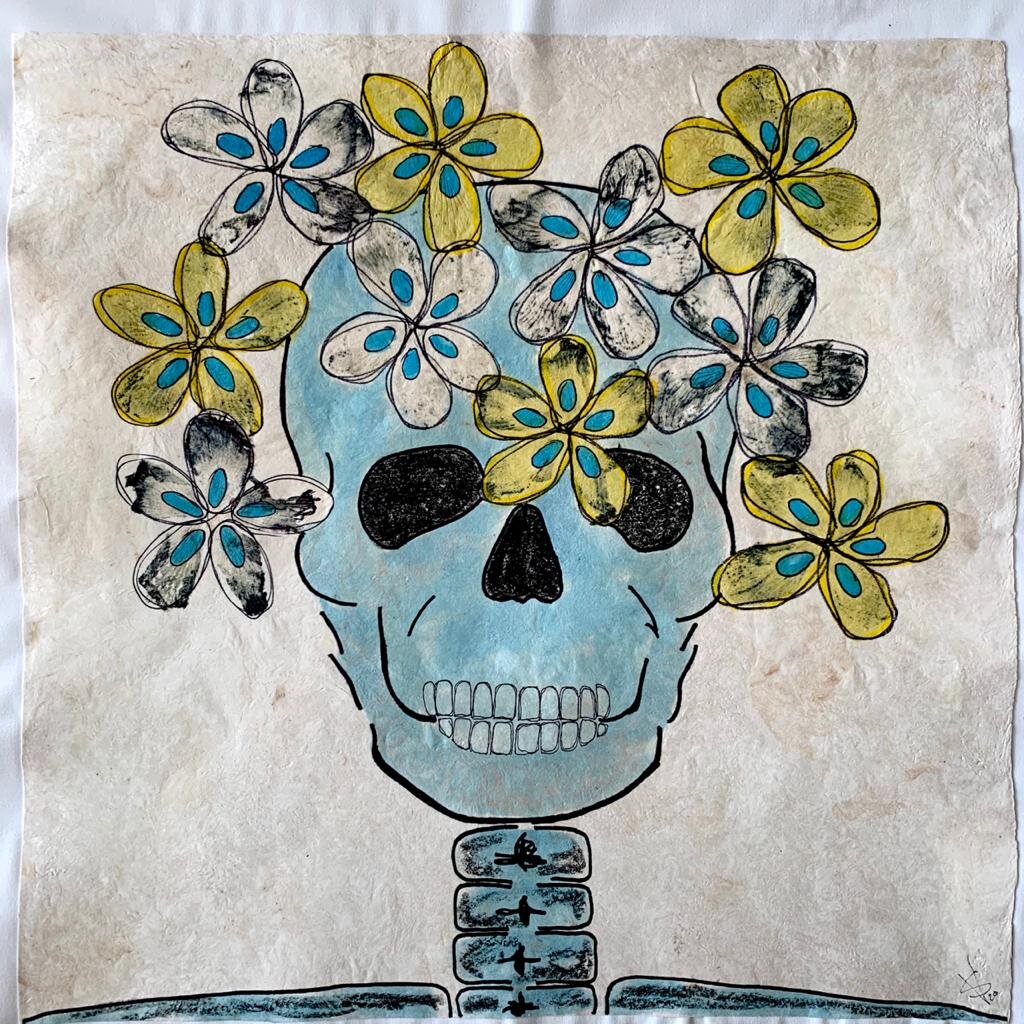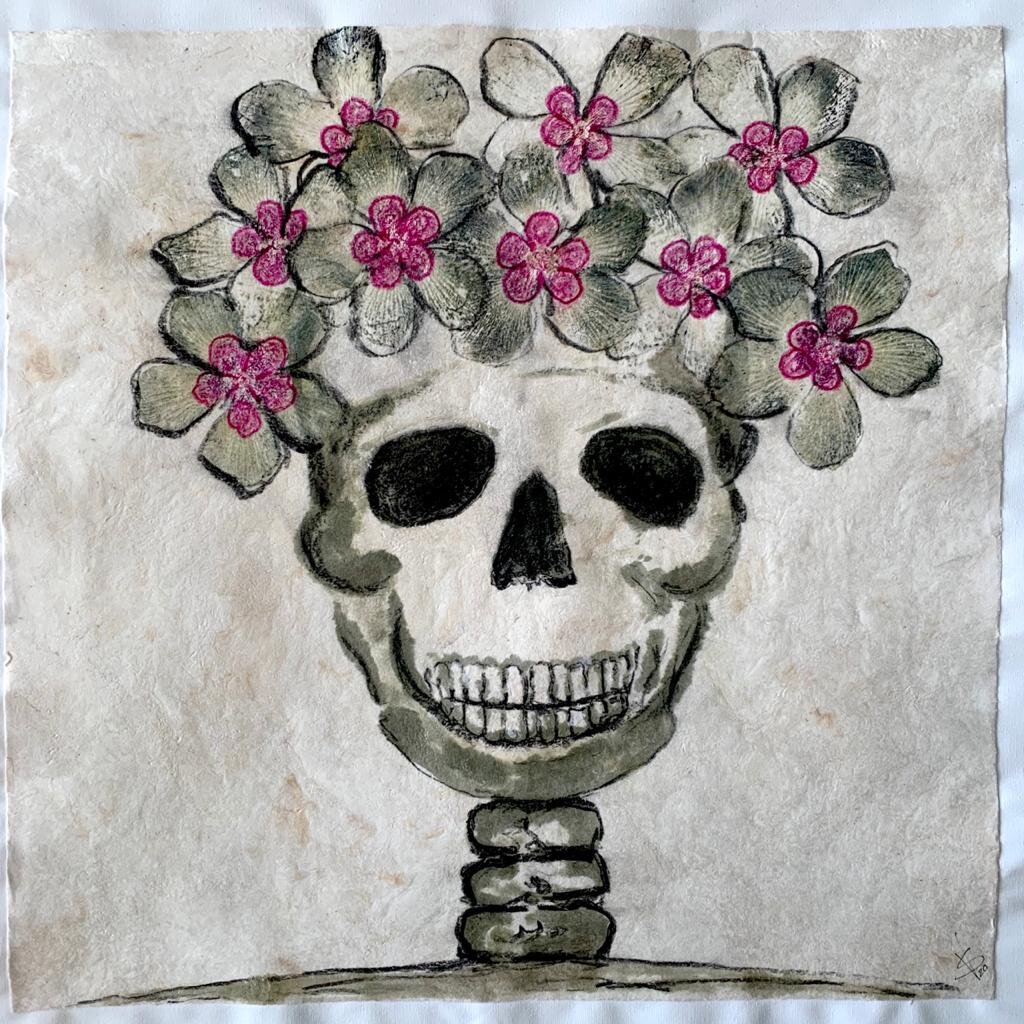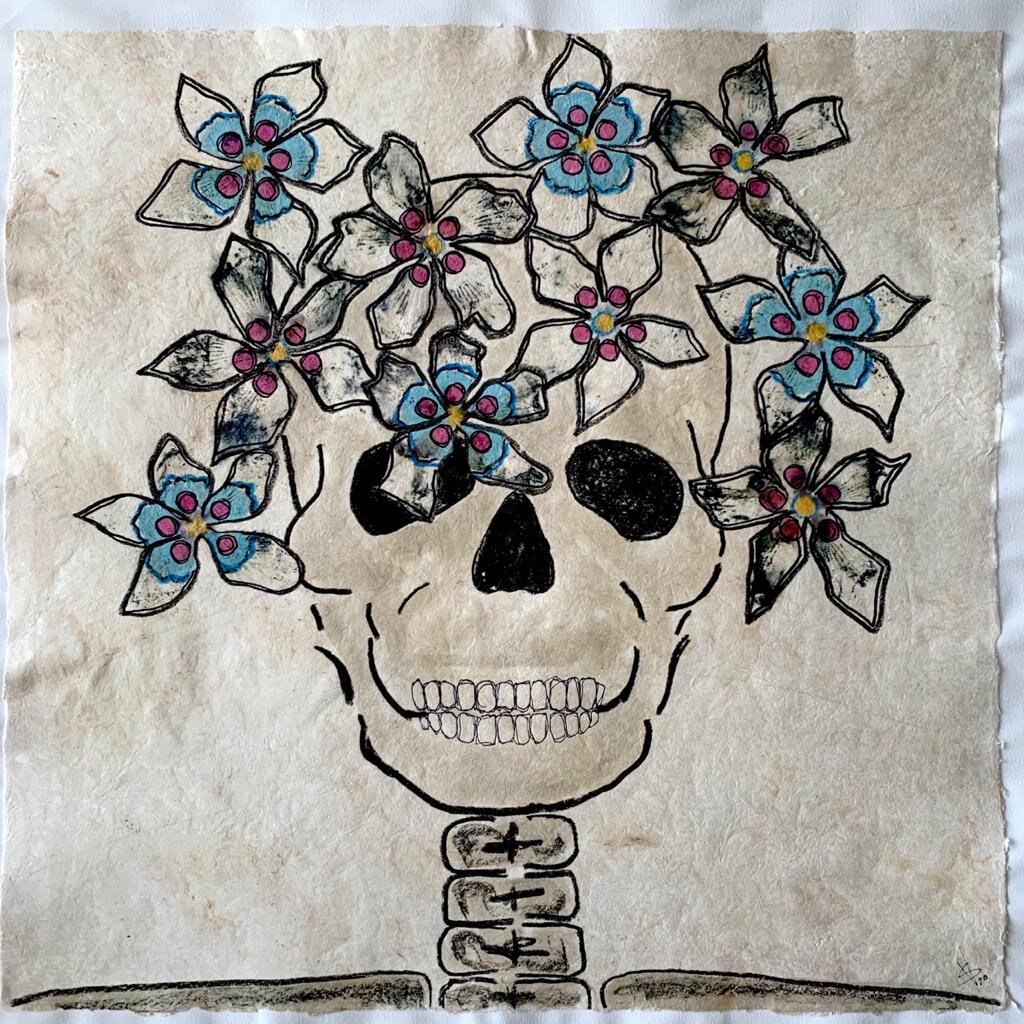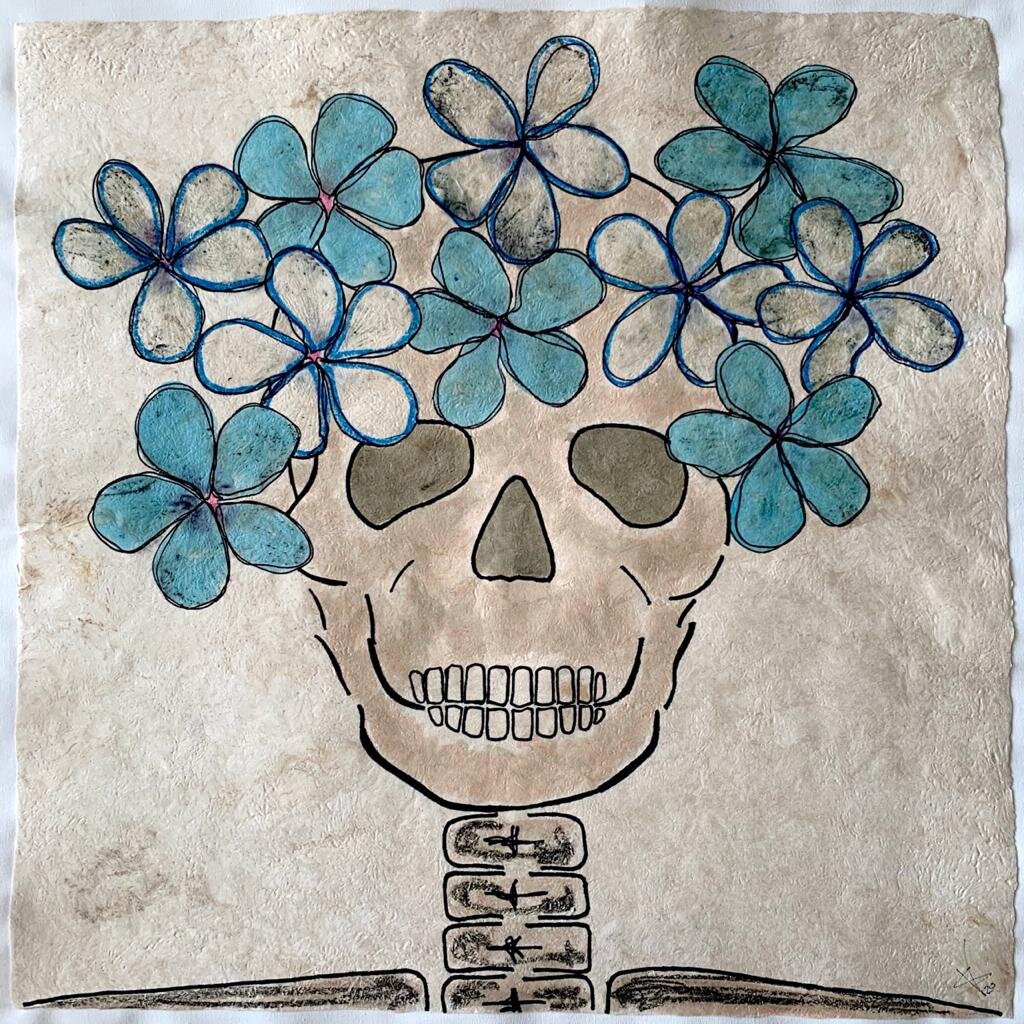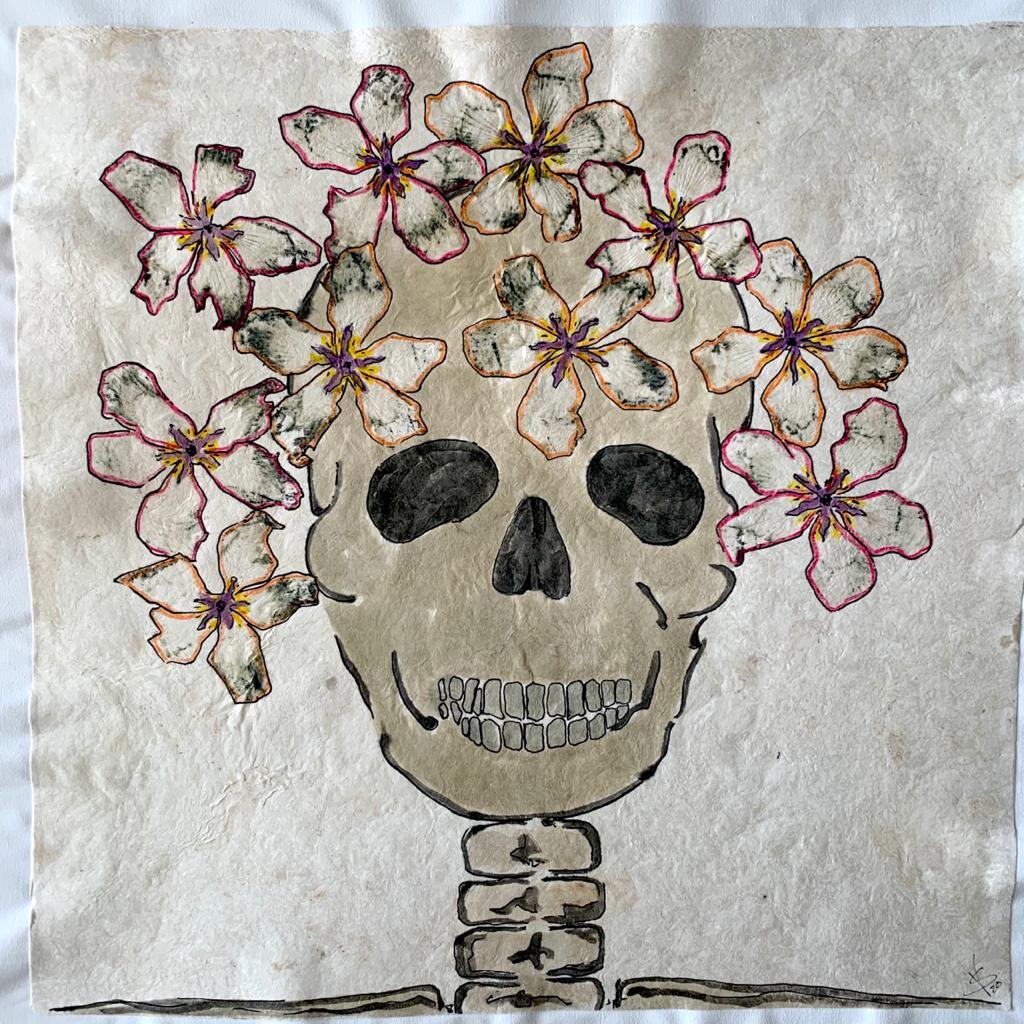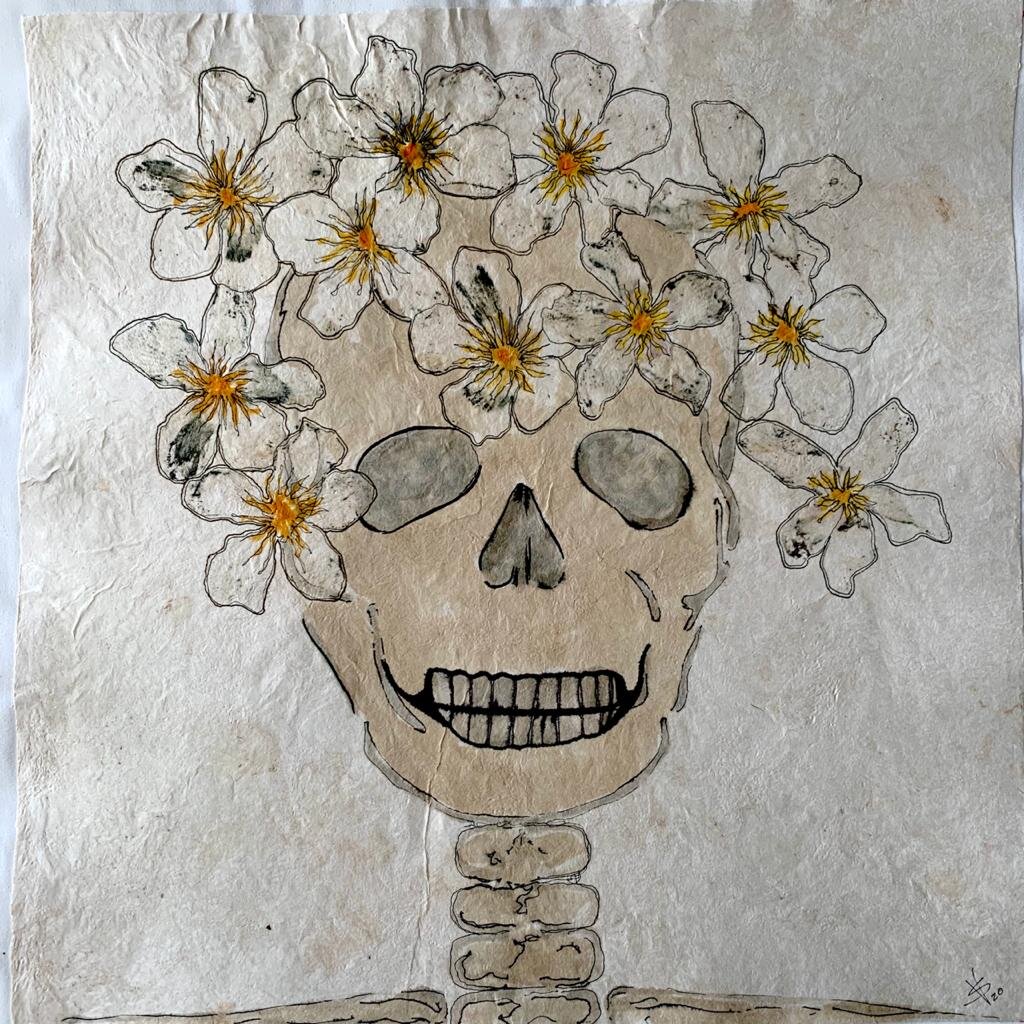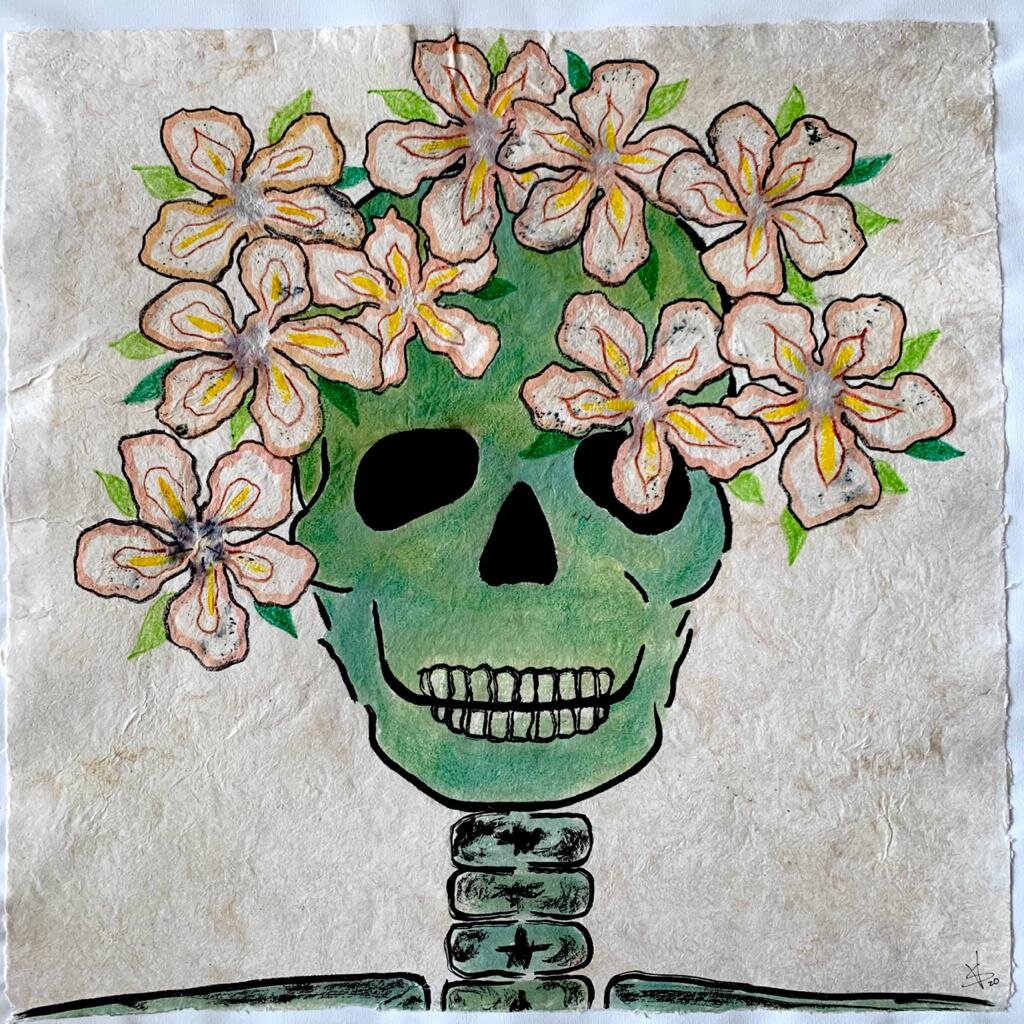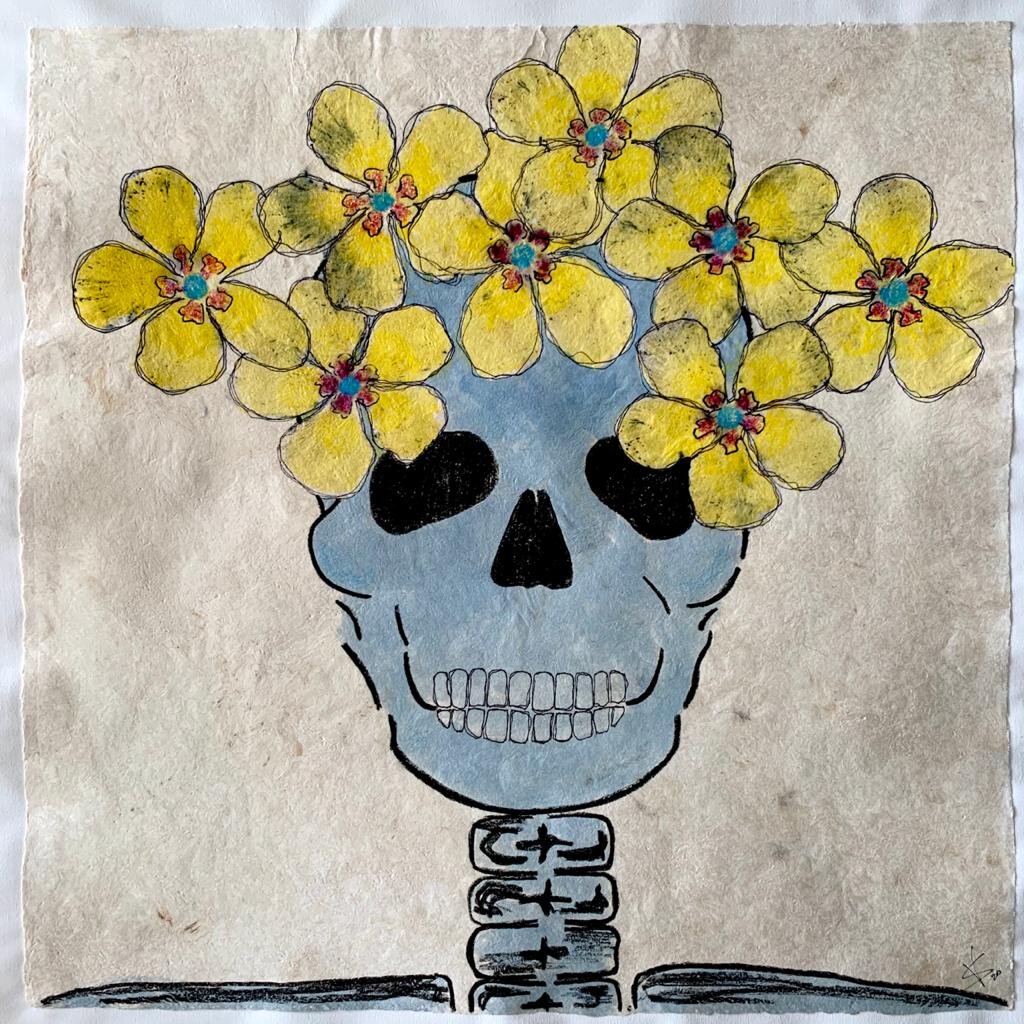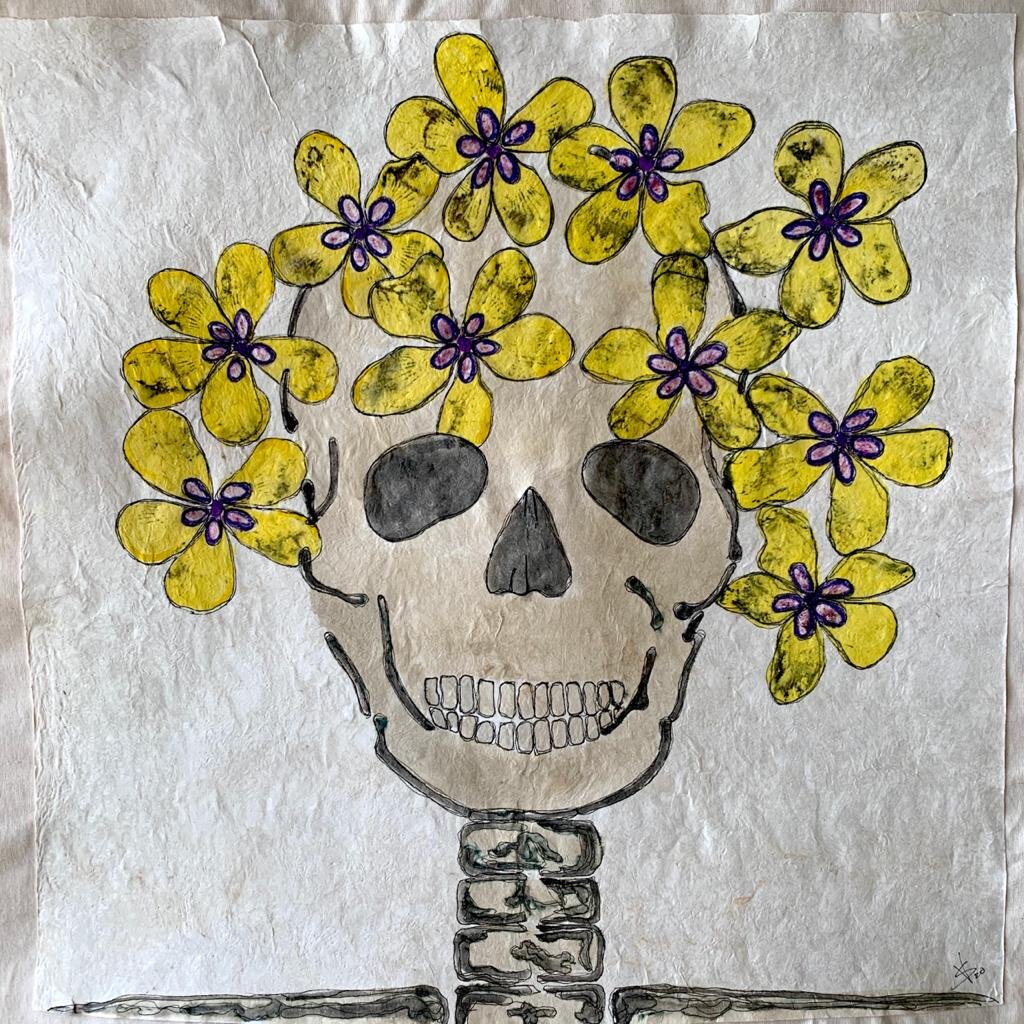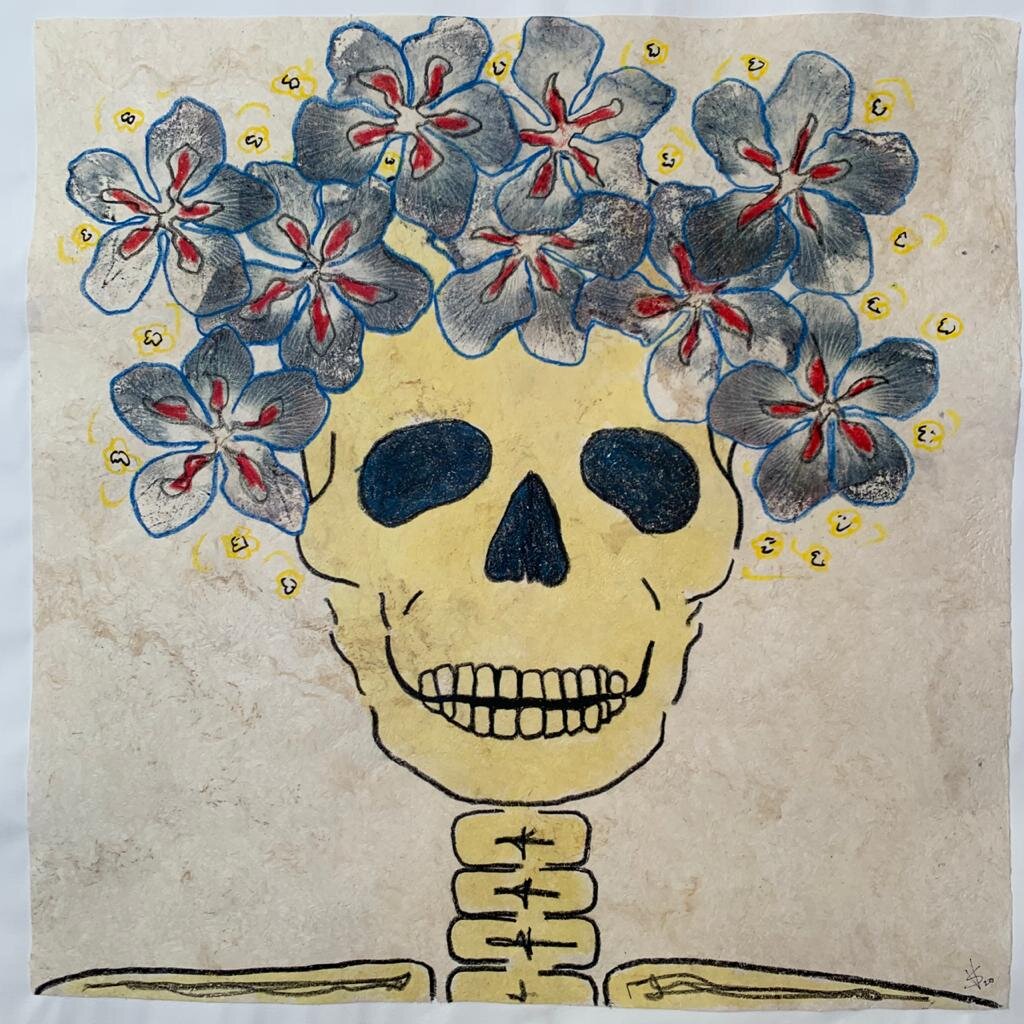welcome to the virtual exhibition
Vivamos la muerte como sólo México sabe hacerlo
Thanks to Kevin Muñoz de Cote, Carmen Maseda Agüero and Elvira Rilova for the photos
It’s a contradiction
that does not fit in a subject,
so much death in one life,
so much pain in a dead man.
-Sor Juana Inés de la Cruz
Death is inexorable and Mexicans, sensing it, have sought a collective response to their fears in order to exorcise it through a celebration — which has already become a sign of identity — where life is celebrated through music, gastronomy, prayers and memories. In Mexico, death is turned into bread to be devoured and annihilated, it is spoken of with respect but also with mockery, it is frightened away with rhymes and through the fond memory of those who are no longer with us; a reconciliation with our irremediable destiny is found.
In this exhibition, Gabriel Sánchez Viveros proposes a revisitation of Mexican idiosyncrasy through the concept of death and the celebration around it but from a personal point of view: the creator who looks at tradition from the present, which appeals to syncretism to generate a revitalizing dialogue with ancestral forces, introducing digital technologies as one more tool.
The artist proposes a journey between two spaces which are physically but also symbolically interconnected, a metaphor for the duality between life and death. Visitors are greeted by a tzompantli, an allegorical threshold of passage to Mictlán, the beyond of Nahua beliefs, which the artist recovers in honor of the structures where the Mexicas placed the skulls of those killed in battle or sacrificed before the gods. The altar of skulls by Sánchez Viveros recalls ancient ancestral practices with its arcane-filled symbolism but also inevitably refers to the present showing conflicts, injustices, the hunger of immigrants and gender violence; those daily forces that shake us in a universal way and that have favored death, not as a rhetorical incarnation, but a cycle in which many people are permanently trapped. Gabriel Sánchez Viveros de-dramatizes — it is a party after all — with a series of pieces of an ironic and joking nature. The skeletons and skulls invited to this meeting speak to us personally, talking to the viewer about the traditions and curiosities of the endearing Mexican celebration.
The imposing Altar of the Dead stands out from the rest of the elements in this exhibition, that bridge with the underworld that Sánchez Viveros uses to recreate a great banquet using traditional elements: the flowers that joyfully welcome the souls, the bread that means home, the purifying salt, the water to comfort the deceased after the long journey from the hereafter, the petate —a basketwork rug also used to place offerings—, the xoloitzcuintle, a representation of a dog that guides the souls, and the candles that mark the path; all pre-Hispanic elements that the artist reinterprets in an unprecedented exercise for him but in which he manages to masterfully introduce them. This altar is dedicated to the memory of Leona Vicario, a journalist, war correspondent and insurgent, a rebellious and free woman who was one of the main figures in the Independence of Mexico.
The exhibition continues with a series of talking skulls which, with a mocking spirit, recite fragments of verses by representative Mexican figures from the world of arts and writing such as: Juan Rulfo, Isabel Moctezuma, José Emilio Pacheco, Sor Juana Inés de la Cruz, Octavio Paz, Frida Kahlo, Nezahualcoyotl, amongst others. But the word of emerging writers shall not be forgotten and that’s why Gabriel Sánchez Viveros also included Magdalena Pérez Selvas, Mario Sánchez Carbajal, Cristina Liceaga, amongst others who, aside from their writings, also lent their voice for the talking skulls along with actors, actresses and other people from the artistic environment to materialize the stanzas with fun resonances from beyond the grave.
The talkative heads receive us with another characteristic element of the celebration of the Day of the Dead: the literary “Calaveritas” which are verses that in a mocking key take away the iron from the Grim Reaper. The author of the rhymes, on this occasion, is Sánchez Viveros himself, who with a multidisciplinary spirit incorporates his own voice to tell us about his personal vision of the celebration of life and the beyond, uniting Madrid and Mexico in the same heart, the one that binds us by history, language and culture.
Gabriel Sánchez Viveros, who habitually uses a variety of materials, on this occasion inhabits the spaces of tradition, visits them and reinterprets them with the use of ancestral techniques and amate paper as a canvas, the material with which that the Aztec codices were made. But not only that, the cheerful flowers that adorn the skulls with eyeless orbits are pigmented with natural flowers such as hibíscus, mexican marigolds and roses, collected from the artist's own garden. The acrylic paints used in the composition of the artworks are complemented with natural waxes enhancing an atavistic appearance and the surprising irruption of technology as one more element that guides the viewer through this journey of allegories in which Sánchez Viveros proposes a constant game between the living and the dead, between here and there, between what is and is not.
Octavio Paz used to say, “The cult of life, if it is really deep and total, is also the cult of death. Both are inseparable. A civilization that denies death ends up denying life”. And this is precisely the great virtue of the Mexicans that Gabriel Sánchez Viveros has managed to masterfully capture, people that speak face to face with death, who paint it, dance it, sing it and that reconcile with it before they die.
Elvira Rilova
Exhibition Curator
